Hagelin - the genius of scientific and technical thought
The legendary inventor of encryption machines is Boris Caesar Wilhelm Hagelin (1892 -1983) .
There are no communication applications where solutions developed by Crypto AG, which was founded more than 60 years ago by the talented cryptographer Boris Hagelin, would not be applied.
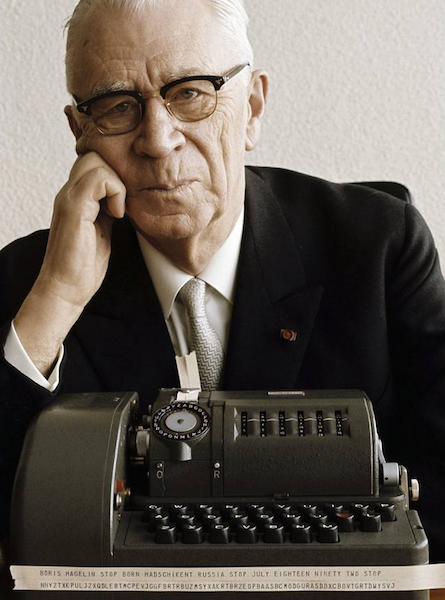
')
The range of equipment and software of Crypto AG is exceptionally wide. The company is known not only encryption for government and military communications. In offices, much of the daily messaging and data still goes through classic channels - PSTN / ISDN, analog or digital telephony and fax. Confidentiality of talks, faxes and information in laptops is provided by a number of Crypto AG hardware solutions: PSTN Encryption HC-2203, Secure GSM HC-2423, Fax Ecryption HC-4221, Crypto PC Security HC-6360, Crypto Laptop HC-6835 and others. For military and civilian applications developed COMSEC and TRANSEC security systems, universal crypto platforms running in various ranges from HF to IP networks: Secos 400/610, CSE-160, CSE-660, HC-2650.
Ethernet technology, which is implemented in a number of encoders of the HC-84xx and HC-85xx families, is used for efficient voice and video transmission; office model HC-8555 provides encryption speed in duplex mode of 10 Gbit per second. Such small-sized handheld devices Crypto Mobile Client HC-7835 / -7845 IP VPN are compatible with all other IP VPN devices from Crypto AG of the HC-78xx family to protect E-mail, VoIP, data or video communication among office IP VPN devices.
The HC-9300 Desktop Crypto security desktop platform, which, after the Crypto Mobile Client HC-7835, acts as an encryption solution not just for one type of connection or one form of data, but for several.
In the city of Azhikent (Russian Empire), located on the territory of modern Azerbaijan, Boris Hagelin was born in 1892. Until 1904, the boy studied at a Russian school, later at a Swedish school, after which he entered the Royal Institute of Technology in Stockholm. In 1914 he received a diploma in mechanical engineering. He worked for 6 years in the Swedish branch of the American company “General Electric” in Baku and spent about a year in the US in the service of the company “Standard Oil”.
In 1915, Swedish engineer - inventor Arvid Gerhard Damm , who was interested in cryptography, together with Captain 3rd Rank Olaf Gulden, head of the Royal Naval College in Stockholm, founded the small company Aktiebolaget Cryptograph . Within five years, the company created several prototypes of encryption machines, which were unsuccessful in their designs.
Arvid Damm created patent No. 52 279 of October 10, 1919. Two cipherdisks rotated above and below the horizontal fixed plate, gears allowed each letter of the plaintext to be rotated to a different number of positions. Because of its bulkiness and complexity, this encryption device has never been widely used (although Dam is considered one of the inventors of the encryption disk and the founder of an entire era in cryptography, along with the American Edward Hugo Hebern, who patented his device in 1917, the Dutch Hugo Alexander Koch and the German Arthur Sherbius). Koch in 1919 built and patented a cipher machine, because of the high price of orders did not follow, disappointed, the patent was sold to Arthur Sherbius, who improved and perfected the encoder (known to us as Enigma).
In 1921, Boris Hagelin was appointed to represent the interests of the company Damme. The company rented a room that consisted of 3 rooms in the center of Stockholm, and it employed more managers than the actual workers. Apart from Damme himself, the following were among the personnel: executive director, technical director, draftsman and accountant. Damm was engaged in the development of telegram for radiotelegraphy, collaborating with major telegraph companies such as Marconi, Telefunken, TSF and Western Union. Later, together with his brother Damm developed the Electrocrypto B-18 with the so-called simplified rotors. The Electrocrypto B-18 was a cumbersome machine and consisted of 3 main blocks: keyboard input, a cipher block from the electric drive of a direct-printing electric typewriter.
And on the basis of this machine, Hagelin invented the world's first electromechanical encoder in 1921, a two-rotor prototype of the cipher machine. It was a model B-21 with a display panel of 25 electric lamps.
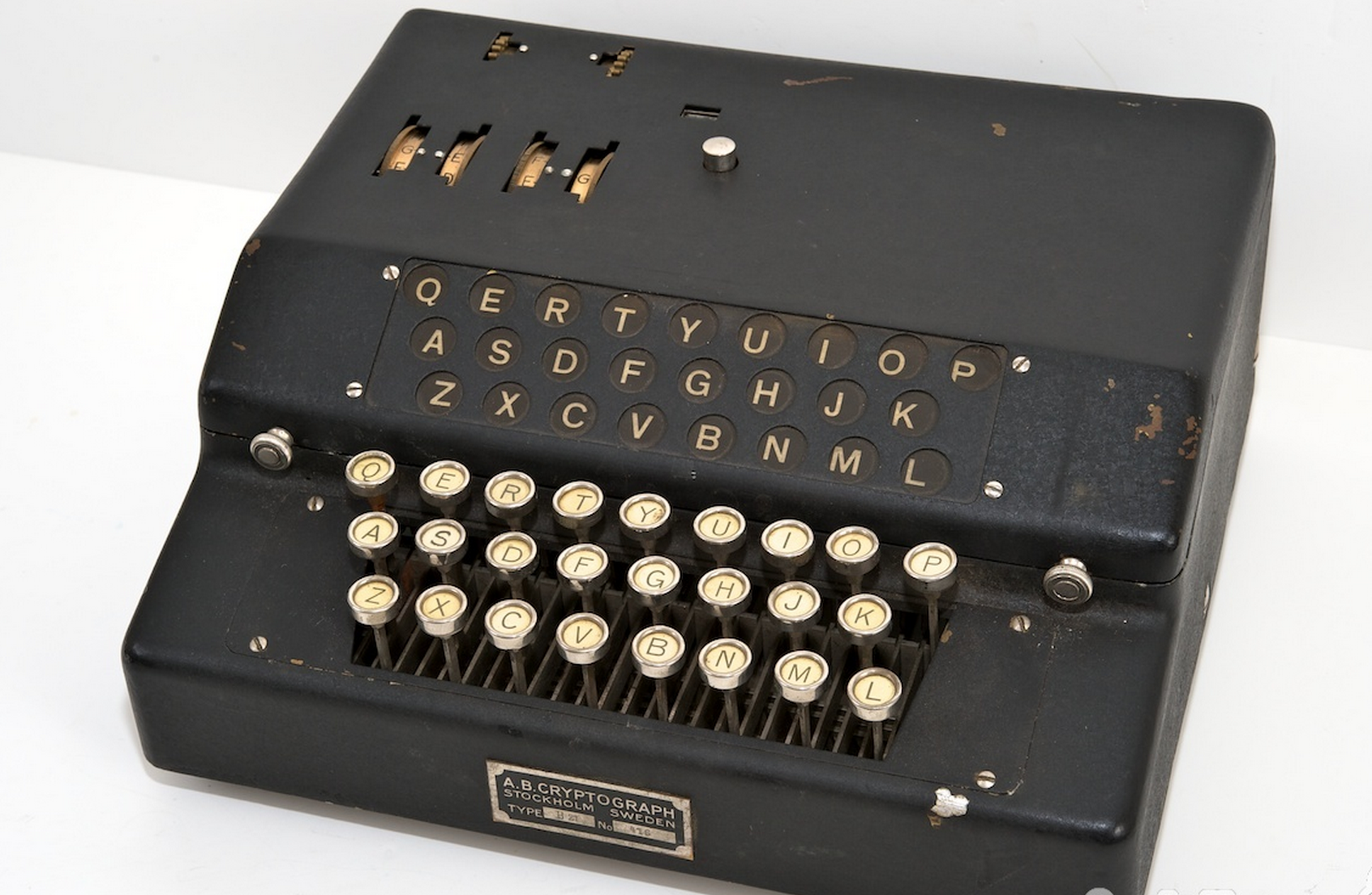
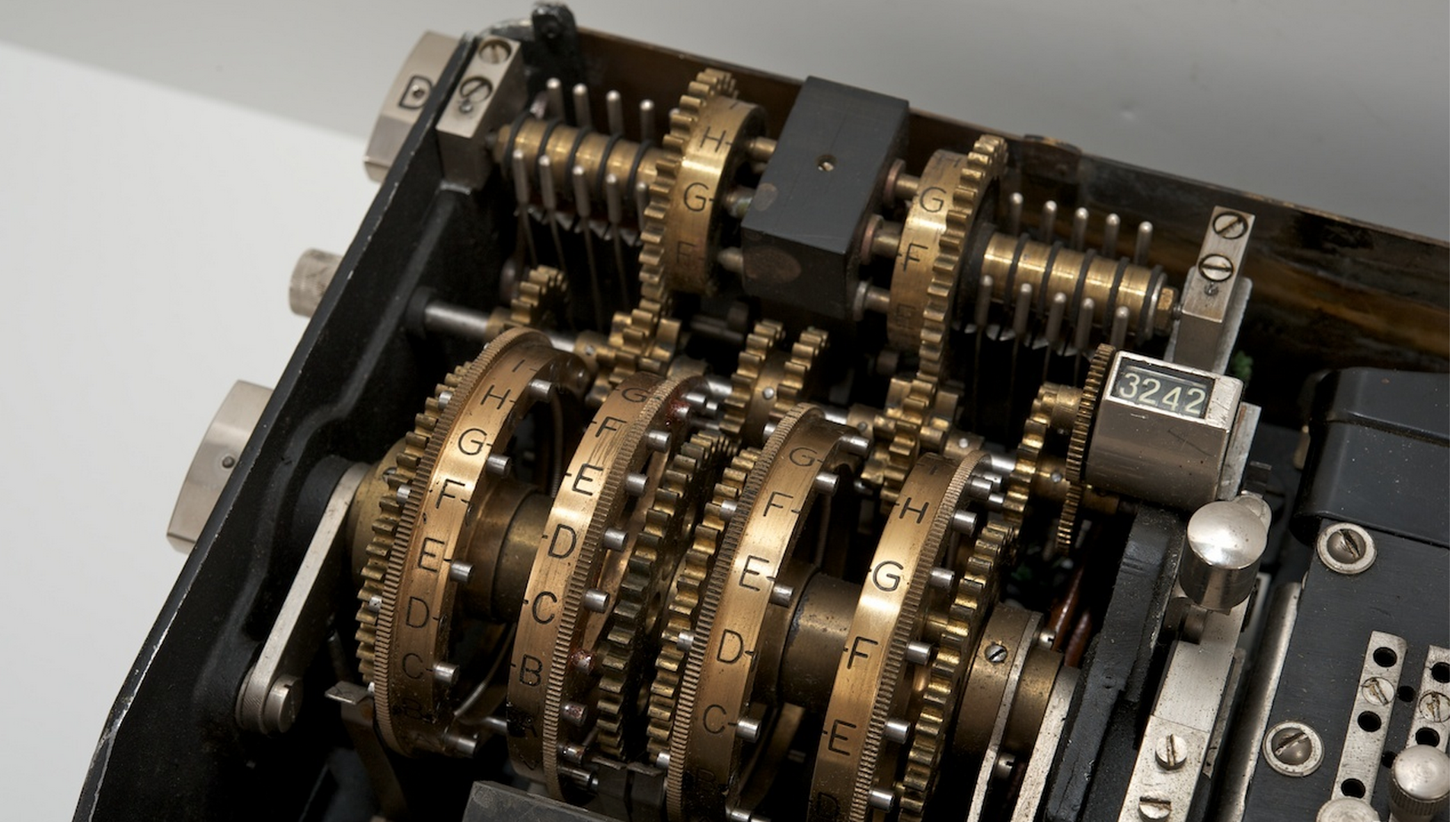
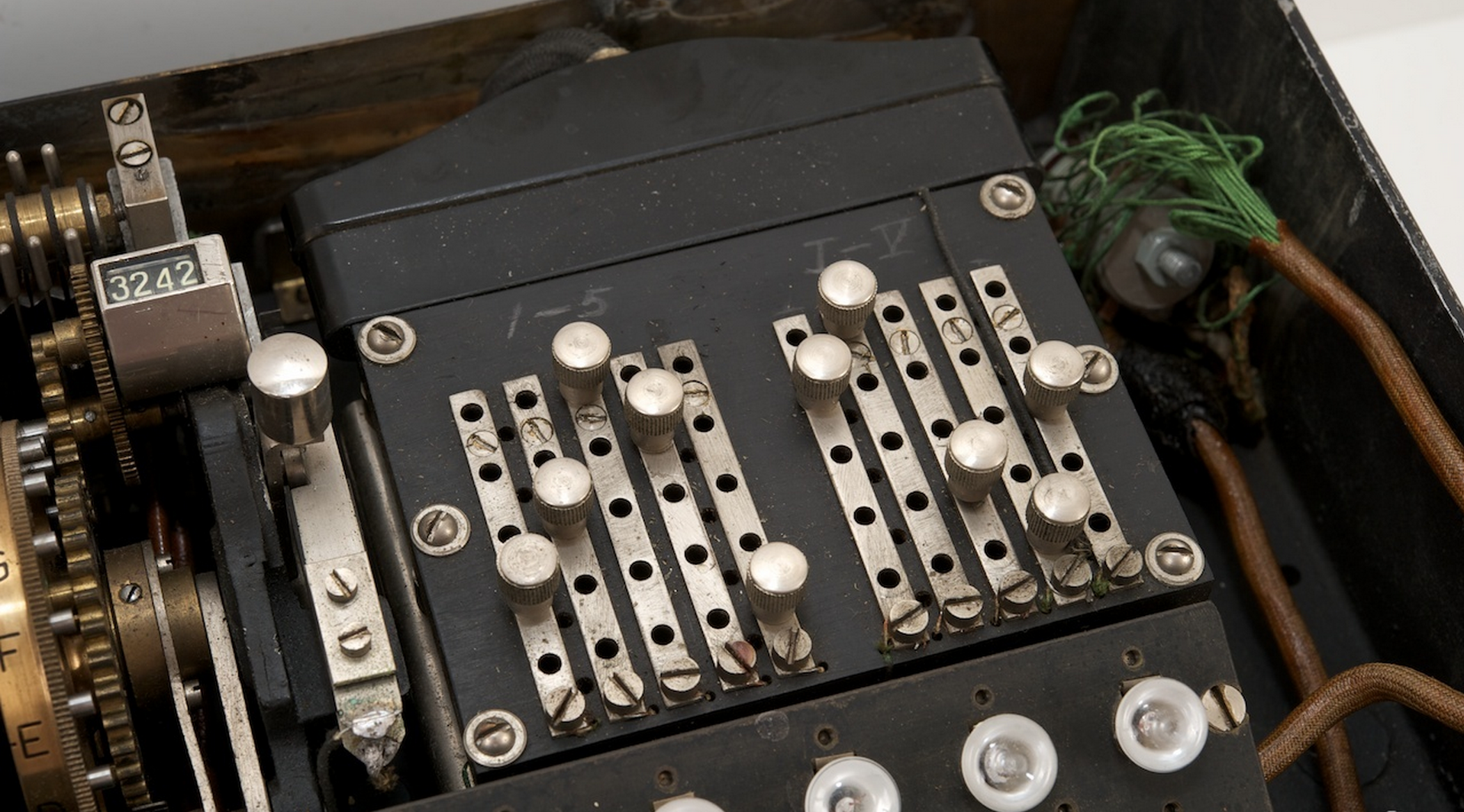
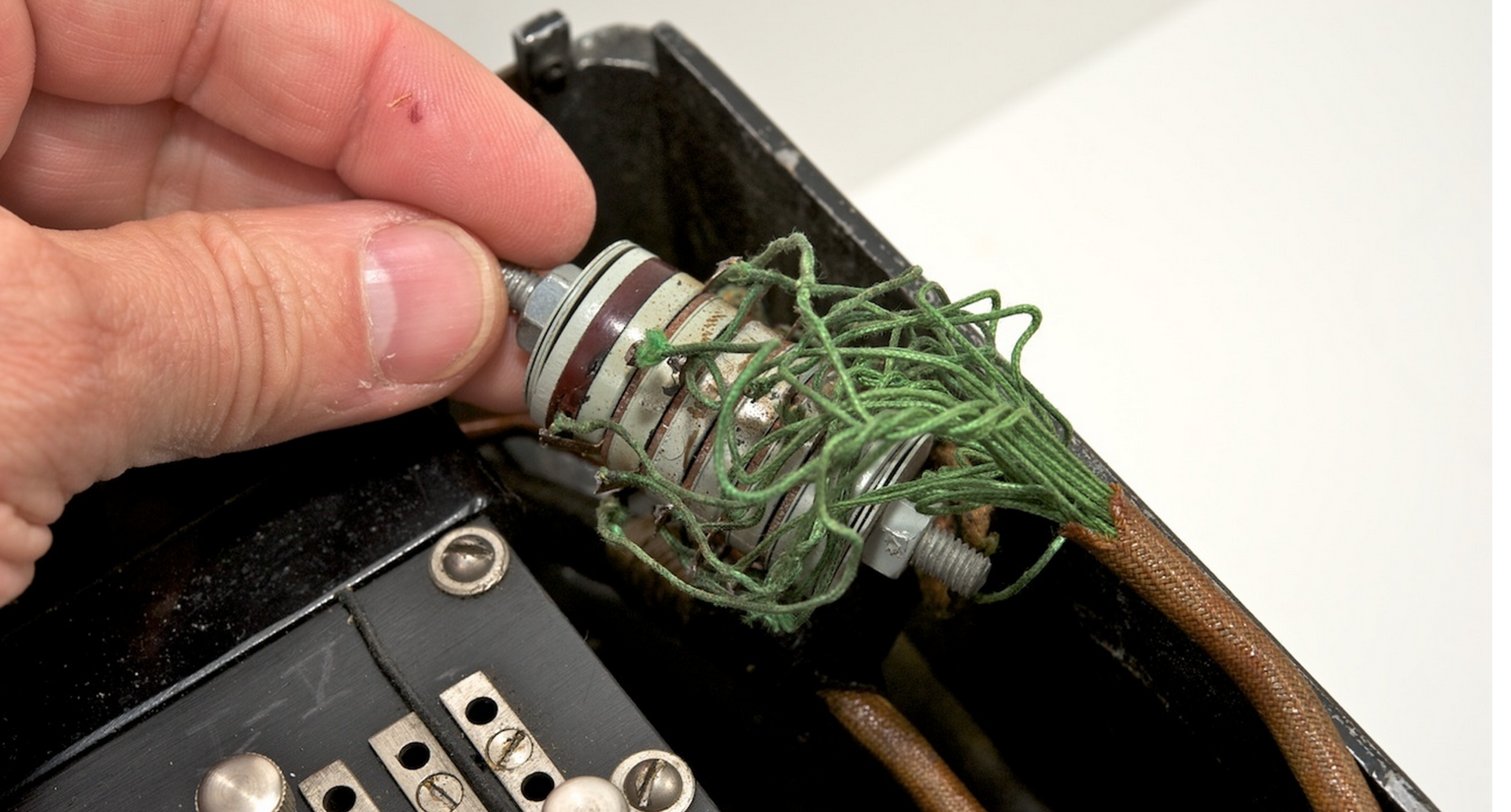
In 1925, Hagelin got acquainted with the “riddle” - the Enigma encryption machine. Soon he made a loud statement that he could create a more suitable machine made in Sweden. To perform this work Hagelin was allocated a period of 6 months.

scheme of the machine in the encryption process
The manufacture of the B-21 encoder sample cost AB Cryptograh 500 SEK, approximately $ 110 at the then exchange rate. Shifromashina had a similarity with Enigma, but carried out encrypting permutations of letters in a 5x5 matrix under the control of 4 pin rotors, which provided higher secrecy in comparison with the Sherbius machine.
Model B-21 was successful and was adopted for service. Boris Hagelin sold it also in several other countries. The cipher machine had an alphabetic keyboard for entering plaintext and a display panel of 25 lamps, which highlighted the received letters of the ciphertext.
In 1925, Hagelin headed the company Aktibolaget Cryptoteknik (after the death of Damme). Financing of the company stopped and Hagelin was forced to look for customers from other countries.
Cooperation with the French army
In 1932, France announced a competition for the development of an encoder for its army. This system was supposed to be so compact as to fit into the pocket of an army overcoat and be used directly on the battlefield. In addition, the encoder should have been provided with an independent printing device. Already available encoders did not meet these requirements. And this challenge Hagelin accepted.
B-21s became interested in French military leaders, but they insisted on two important improvements: the cipher machine must be portable and capable of typing ciphertext. As a result, Hagelin developed a mechanical and electrified version of the four-rotor B-211 cipher machine, replacing the lamp panel with a printing mechanism. This encoder weighed about 17 kg, worked at a speed of 200 characters per minute and was placed in a wooden case the size of a large briefcase. The cipher machine created by Hagelin met the needs of the French army of the time and was put into service by it.
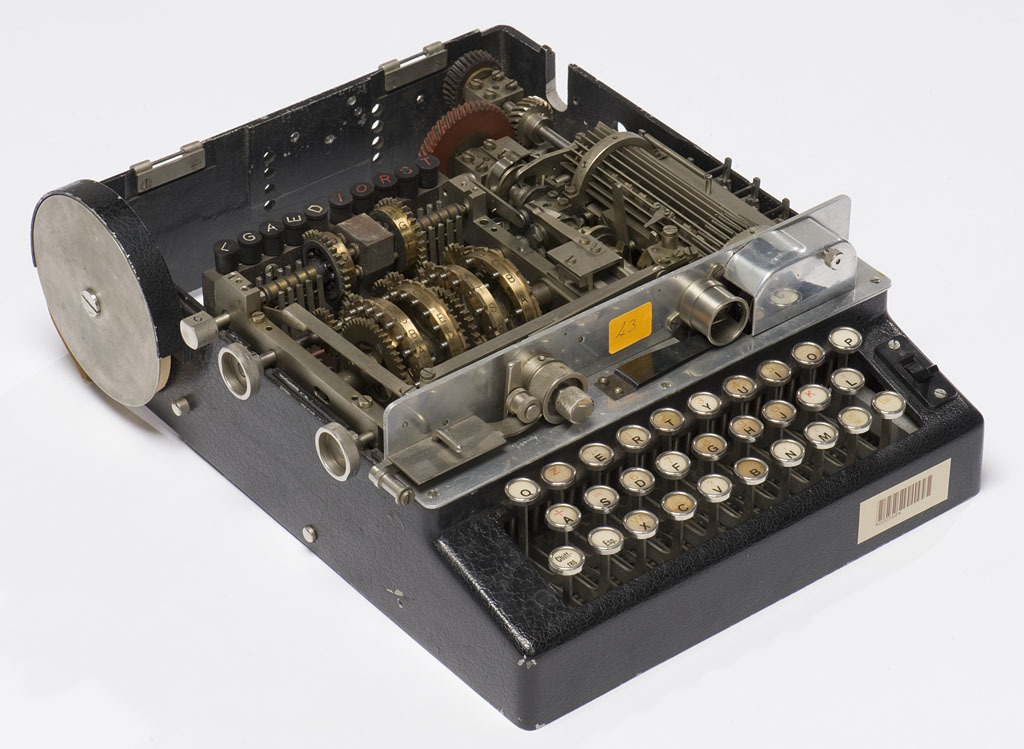

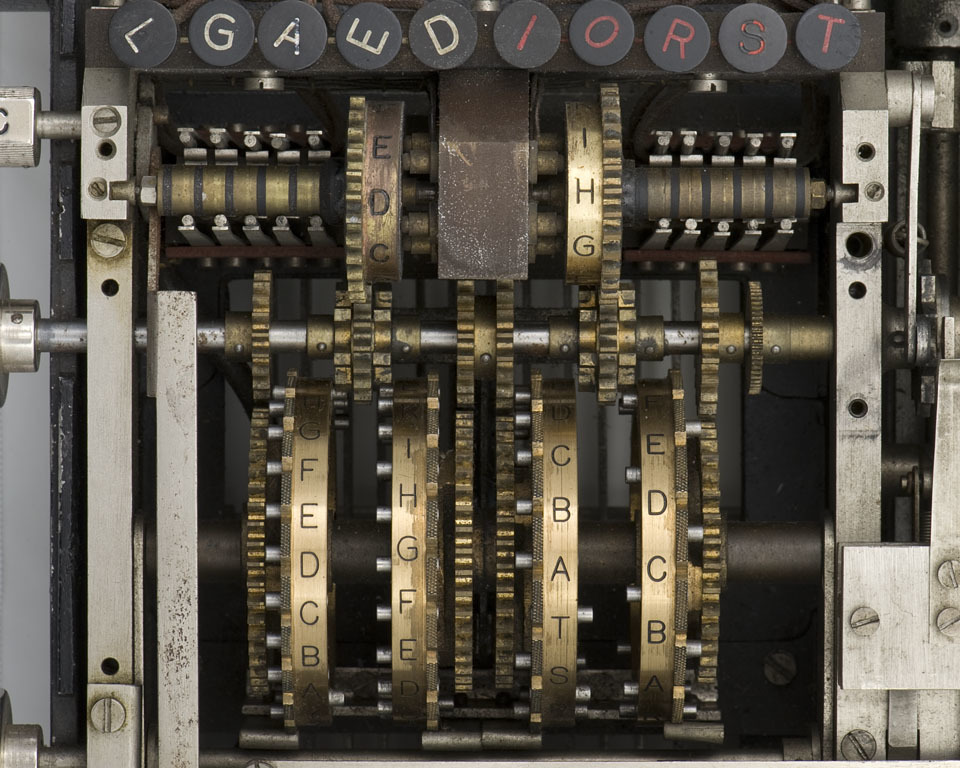
The French army with confidence reacted to the degree of secrecy encryption texts machine B-211. More than 500 such ciphers were built at the telephone station of LM Ericsson.
Cars B-211 sold much more successfully than the German Enigma. Even before World War II, Hagelin sold 2 cipher machines and a Soviet trade mission in Stockholm. Here are just Russian alphabet contains more than 30 letters, and therefore two, rarely used, had to be removed from the keyboard and on the rotors. In the expanses of our country, it is known as K-37. After the end of the war, the French army additionally purchased a hundred B-211.
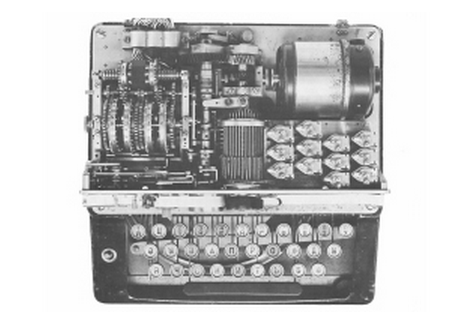
Russian version
In 1934, at the request of the French cipher bureau, Boris Hagelin, using the design of the counting mechanism of the money-changing machine, developed the fully mechanical C-35 cipher machine, which was significantly smaller than the others of this class. She easily switched between encryption and decryption modes and could print texts on a narrow strip of paper.
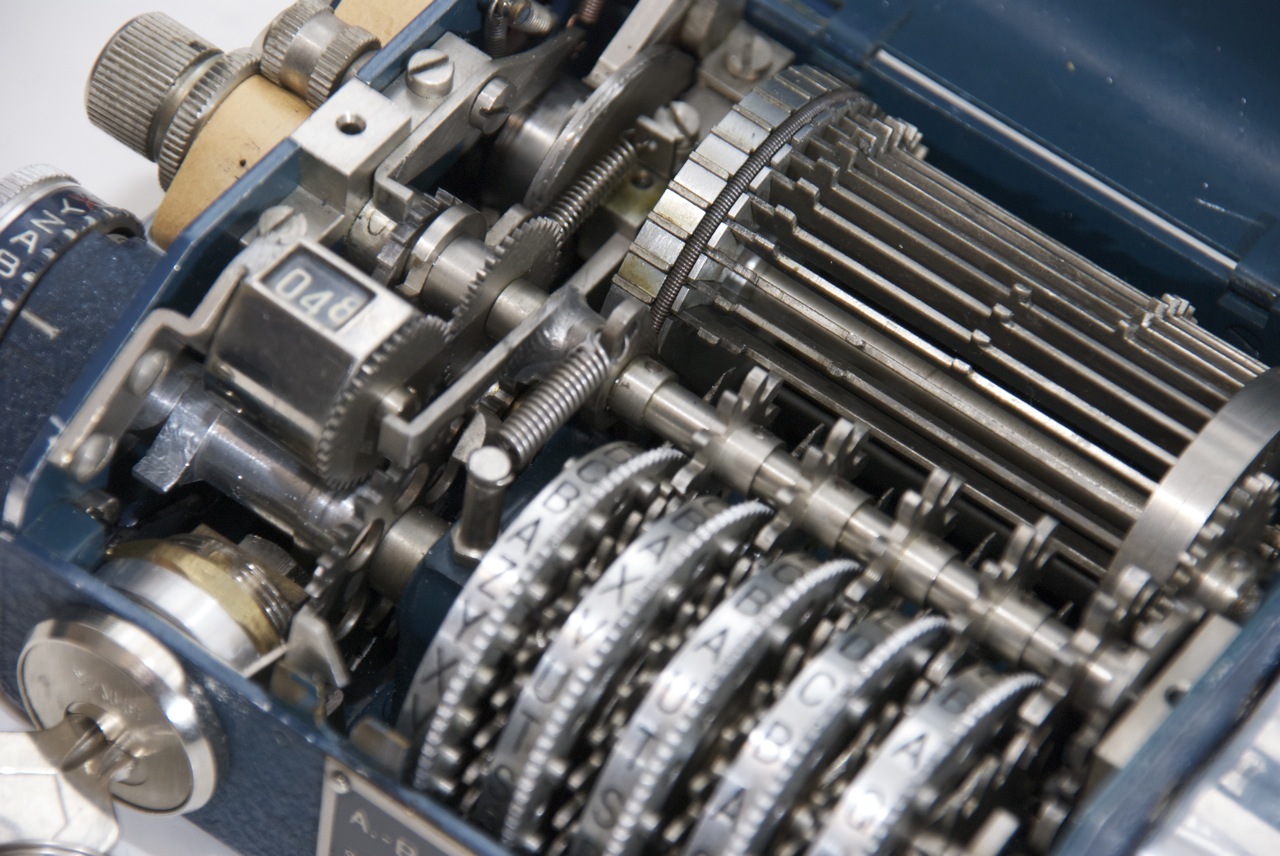
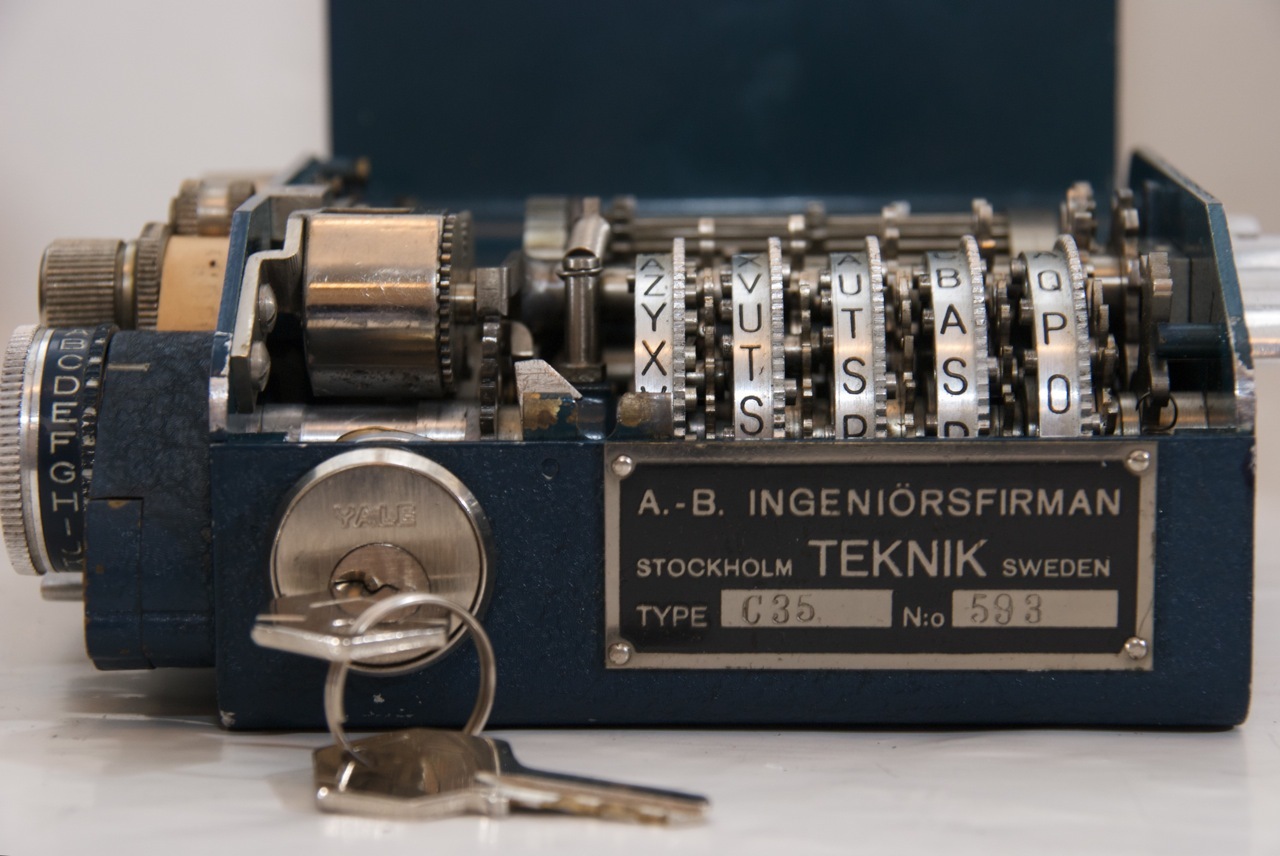
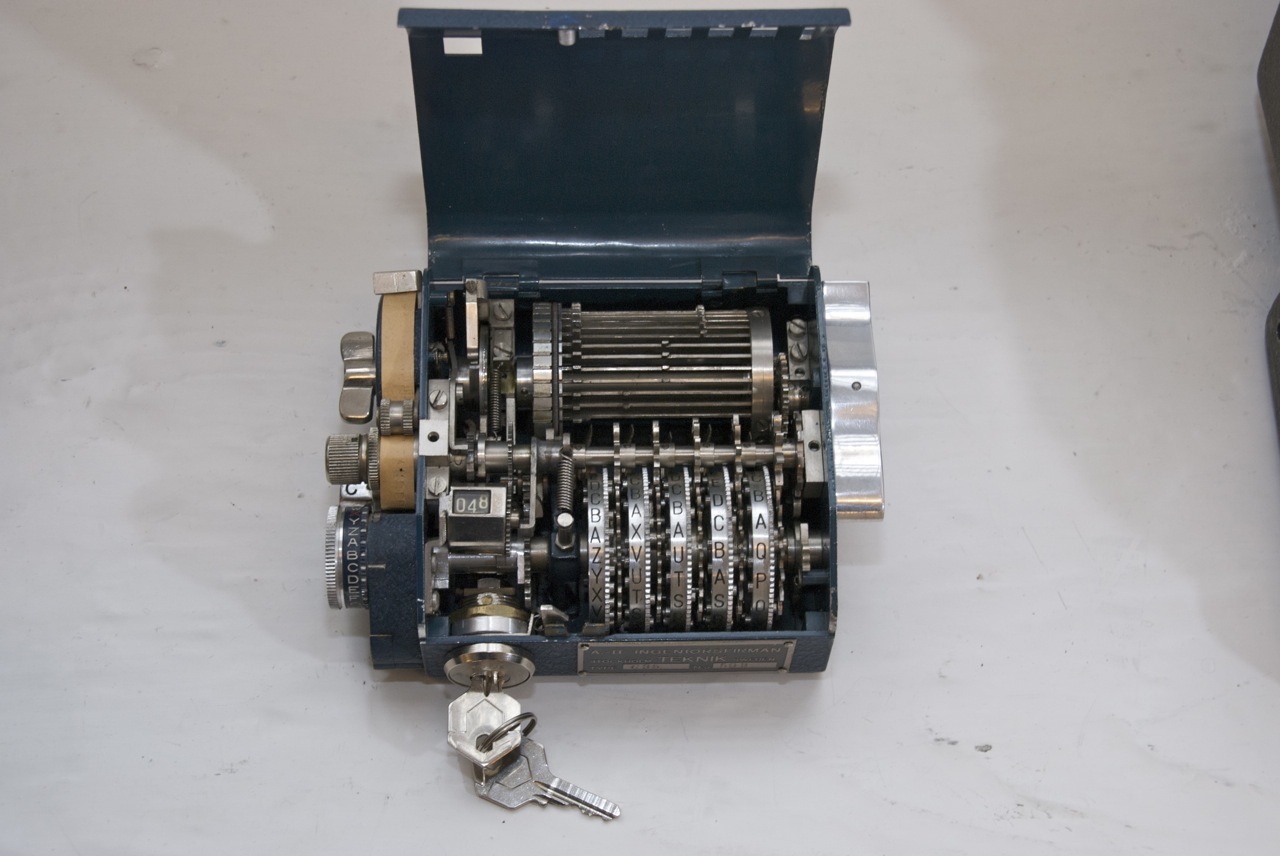
In October 1937, the French approved this car. Six copies of a slightly modified encoder, called the C-36 , were handed over to the Swedish naval forces for testing. In fact, the C-36 encoder was the same as the C-35, but with the presence of an additional cover covering it with a key and a rubberized case. The changes made it possible to avoid ingress of water and dirt in the field conditions for which the C-36 was created. This device implemented the gamma code, differed by small dimensions, 83x150x178 mm, and weight.
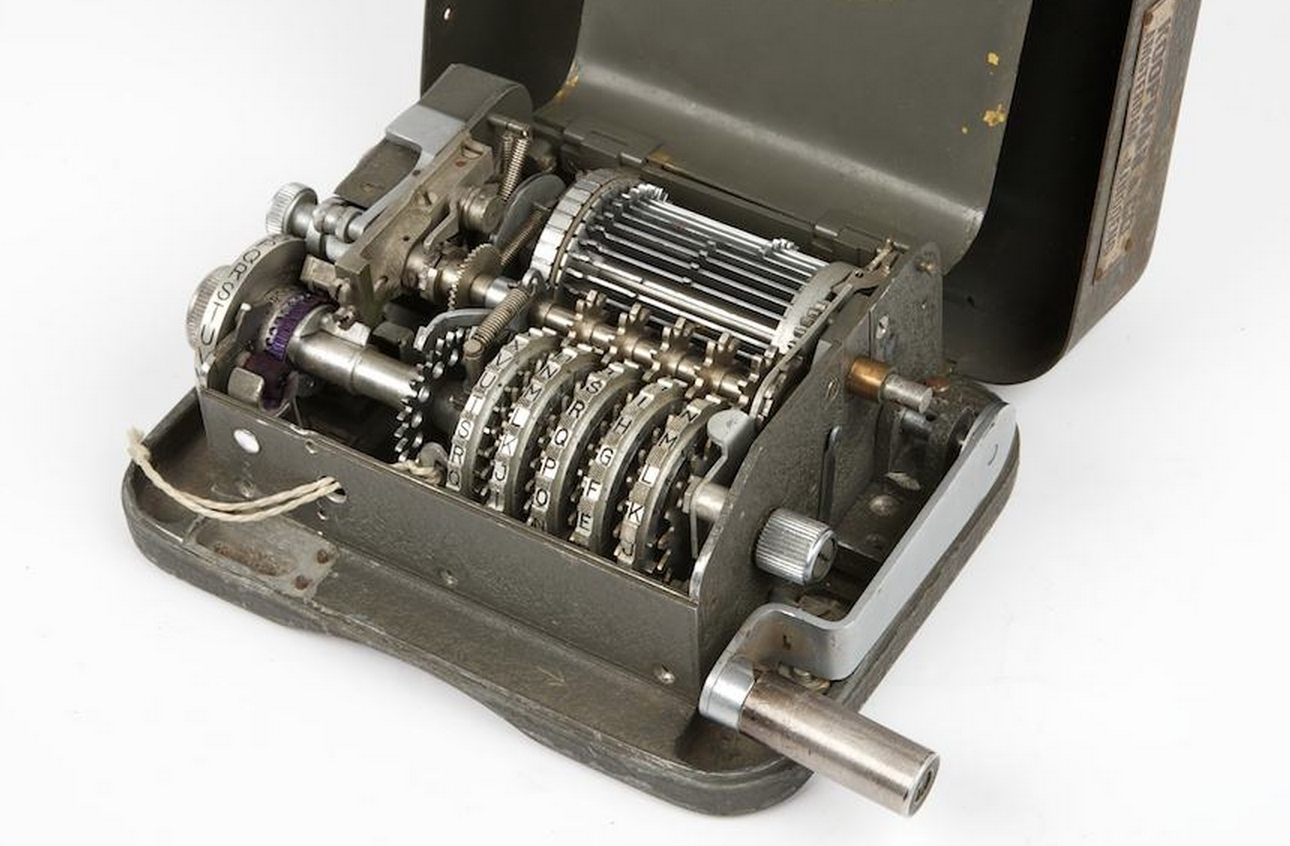
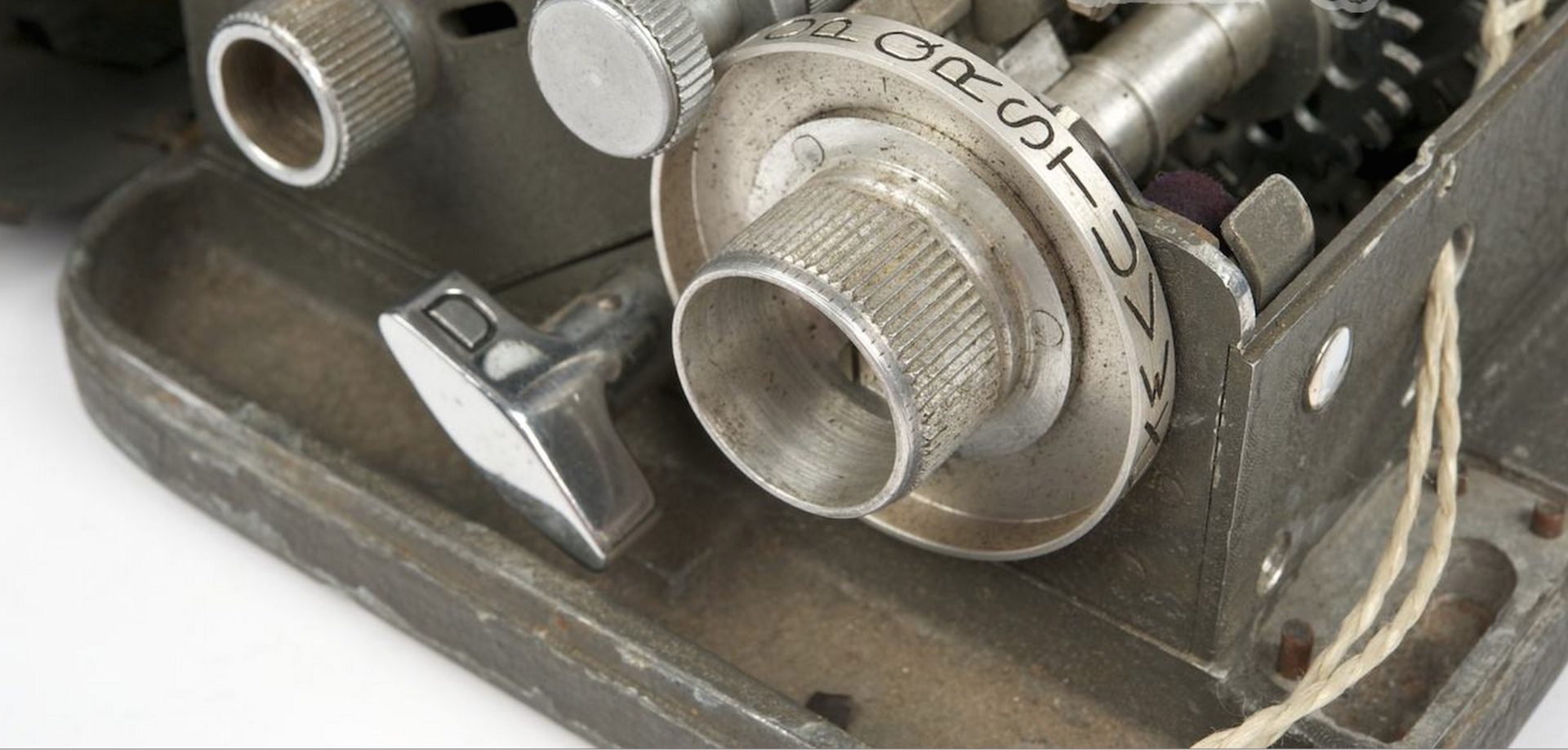
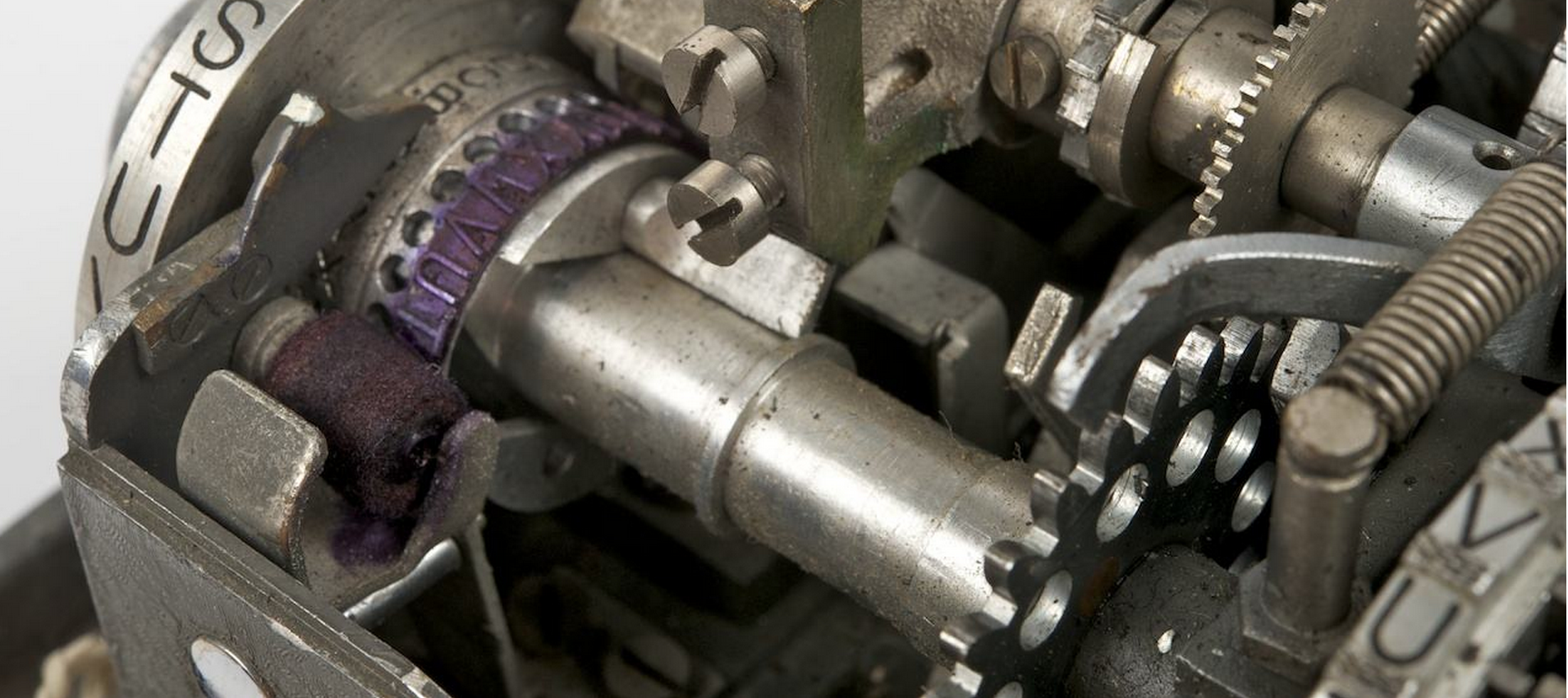
C-36 received the highest marks from French specialists. As a result, France ordered a batch of 5,000 at once, which brought Hagelin’s firm substantial profits. At about the same time, Boris Hagelin created miniature encoders for the French police — pocket equipment that was set in motion by the thumb of his left hand. Right hand could write ciphertext. A number of these devices were also purchased by France.
In the pre-war years, the C-36 type machine, except France, was purchased for use on communication lines by the United Kingdom, Italy, Germany and some other European countries. According to some reports, the Germans even organized a "pirated" production and released about 1,000 copies, which were used by the Abwehr and the Foreign Ministry. An upgraded version of the C-38 was sold to the Swedish army in the amount of 5,000
pieces
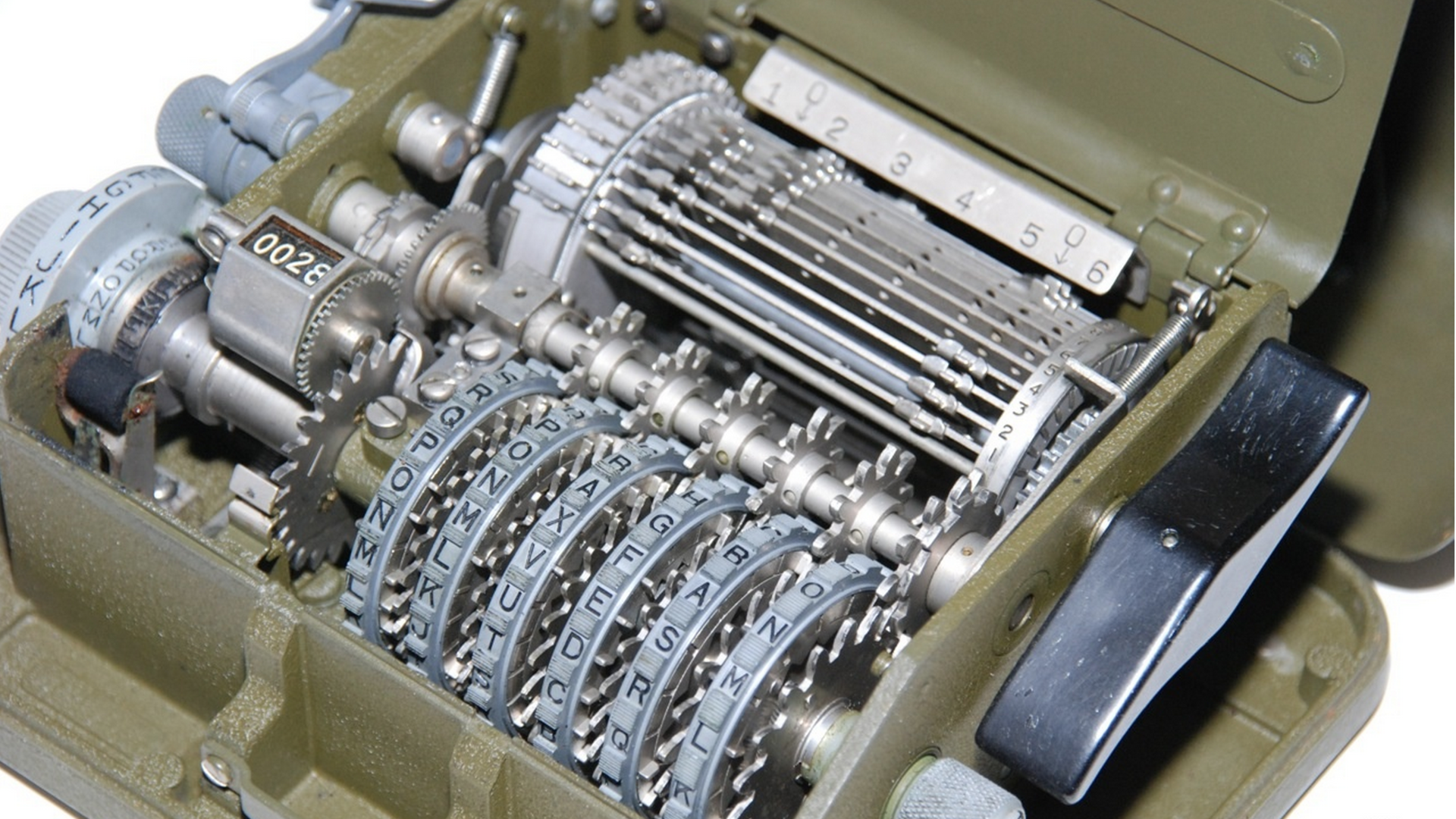
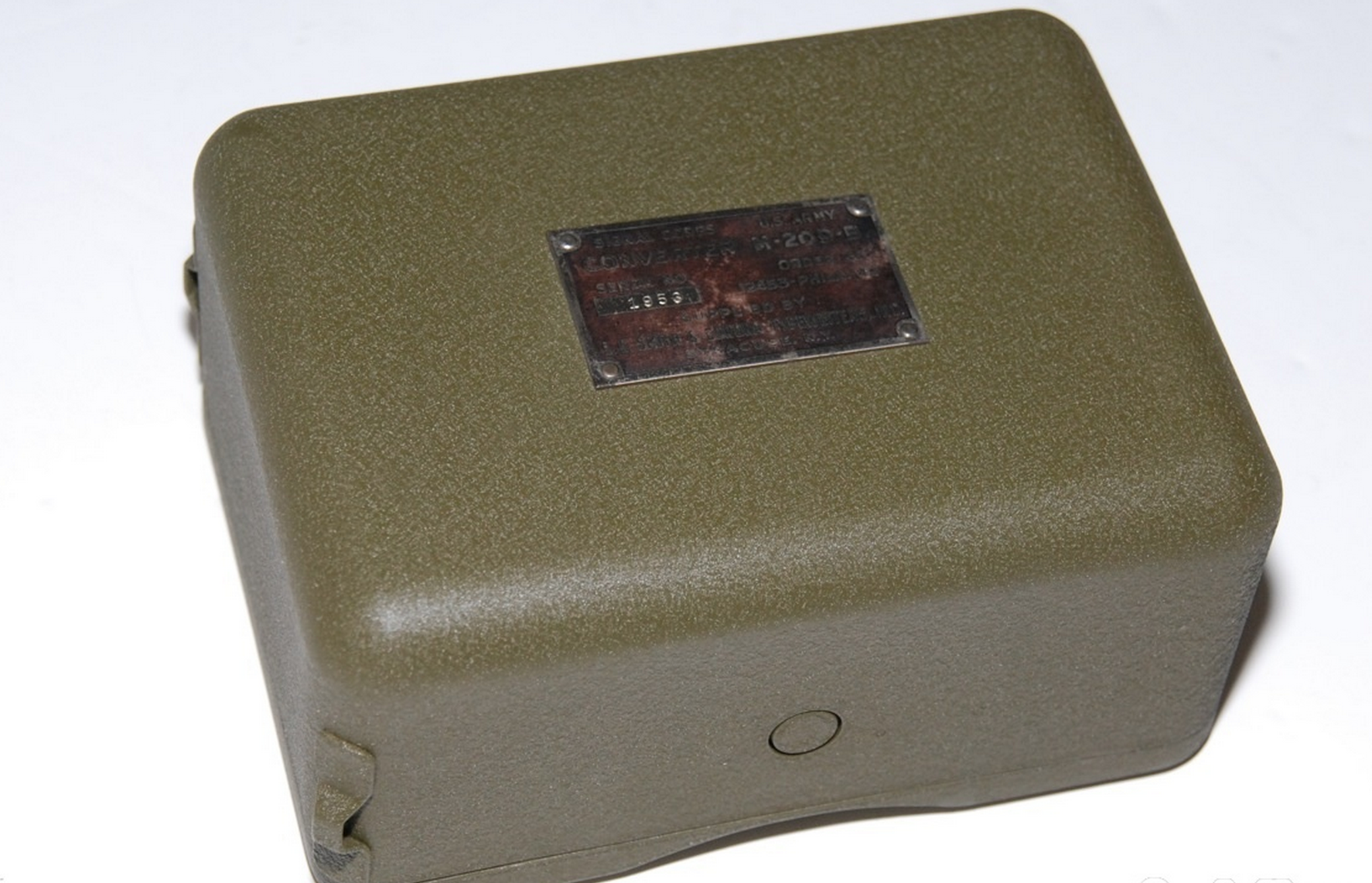
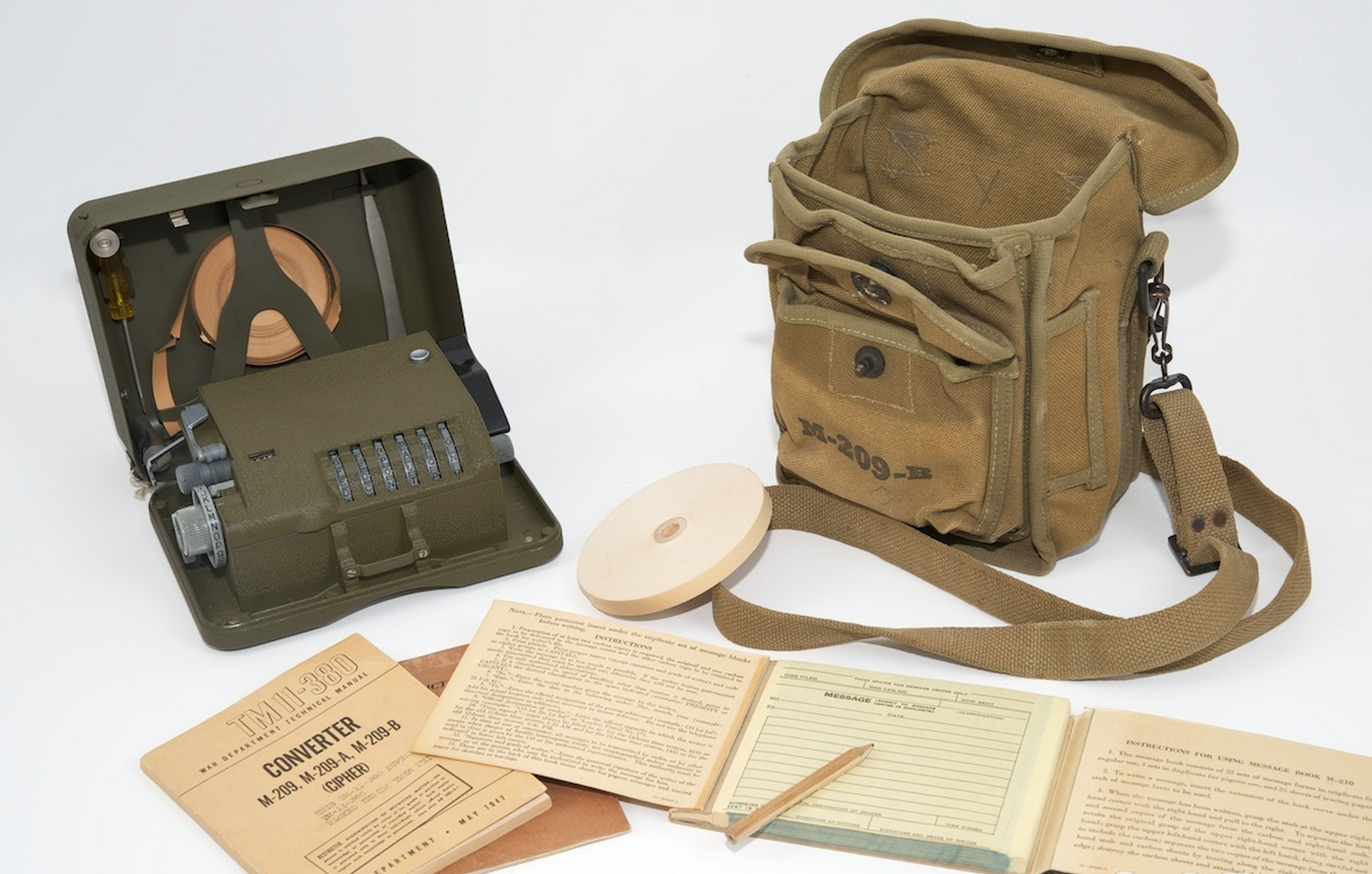
Success in usa
This success story is not over, and, one can say, just started to gain momentum. Since 1936, Boris Hagelin corresponded with the Americans about the purchase of C-36, in the years 1937-1938, the inventor visited the ocean more than once. However, it soon became clear that the organization of mass production of encoders in Europe and sending them to America would be extremely difficult because of the outbreak of World War II. Hagelin decided to go to the United States and organize the production of C-38 directly in America, but it was not easy to leave the warring Europe. He later recalled:
Despite the difficulties, Hagelin got to the United States. The government expressed a desire to purchase an upgraded C-38 cipher machine. Americans were very pleased with this model, and therefore, it was decided to expand its mass production. In 1942, Smith Corona was established in the United States, which produced almost 400 such devices per day. Total company specialized in the manufacture of typewriters, has released under license more than 140,000 encoders. The encoder got its name Converter M-209 and was massively used in the army, in the link from the battalion to the division, and in the navy during and after World War II.

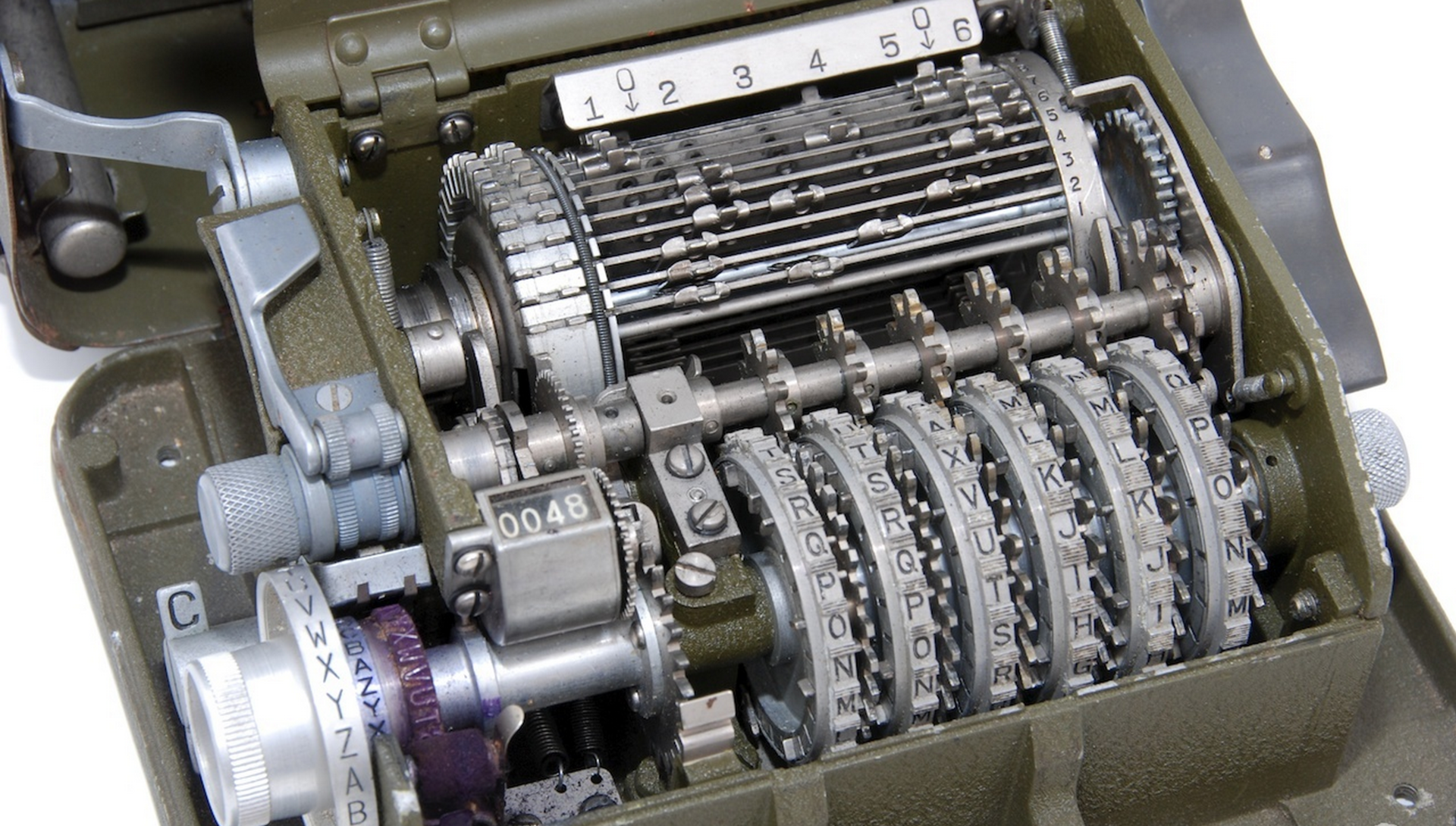
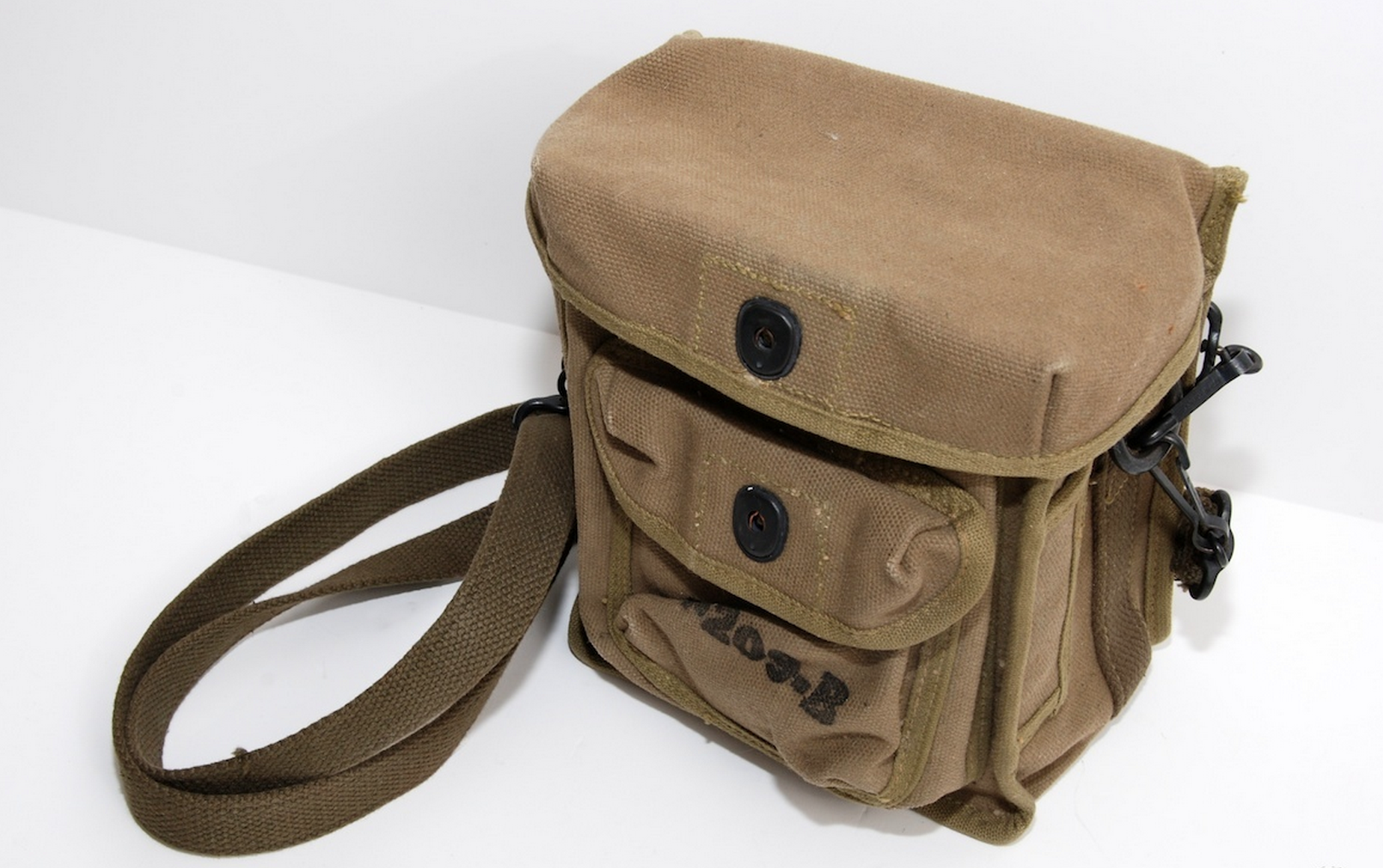

M-209 was extremely popular in the army, and all because it was small and light. The operator was trained to work on it already for a couple of hours of training, no special conditions for the secret storage of this cipher machine were required. But there was also the other side of the coin, German cryptographers opened the M-209 encryption for 4 hours, knowing this, the Americans used it only at the tactical level, in the field. Finally, the car ceased to be used after the end of the Vietnam War.
Simulator M-209
After the end of the Second World War, many countries purchased and used c-36/38 type cipher machines and their modifications on their communication lines. Hagelin received millions of dollars, being the owner of a patent for the invention of the encoder.
By 1940, the inventor's firm had its own brand AB Ingeniorsfirman TEKNIK, which existed until 1952. Hagelin cipher machines were sold in other countries, several copies were sent to Japan. By the end of the war, even German cryptographers showed no weak interest in Hagelin’s cipher machines, and began to produce copies of the BC-543 for their own use, called the C-41. About 700 of them were made, and in the postwar 1950s in Germany - about 10,000 cars of the C-41 version.
In turn, France also had the rights to manufacture this Hagelin rotary machine.
The BC-38 electromechanical cipher was designed and built by AB Cryptoteknik in Sweden. As the name implies, it was an upgraded model of the mechanical C-38. "B" was added as a prefix to the model number to indicate the presence of a keyboard. Thus, the VS-38 is actually a C-38 with an engine and a keyboard.
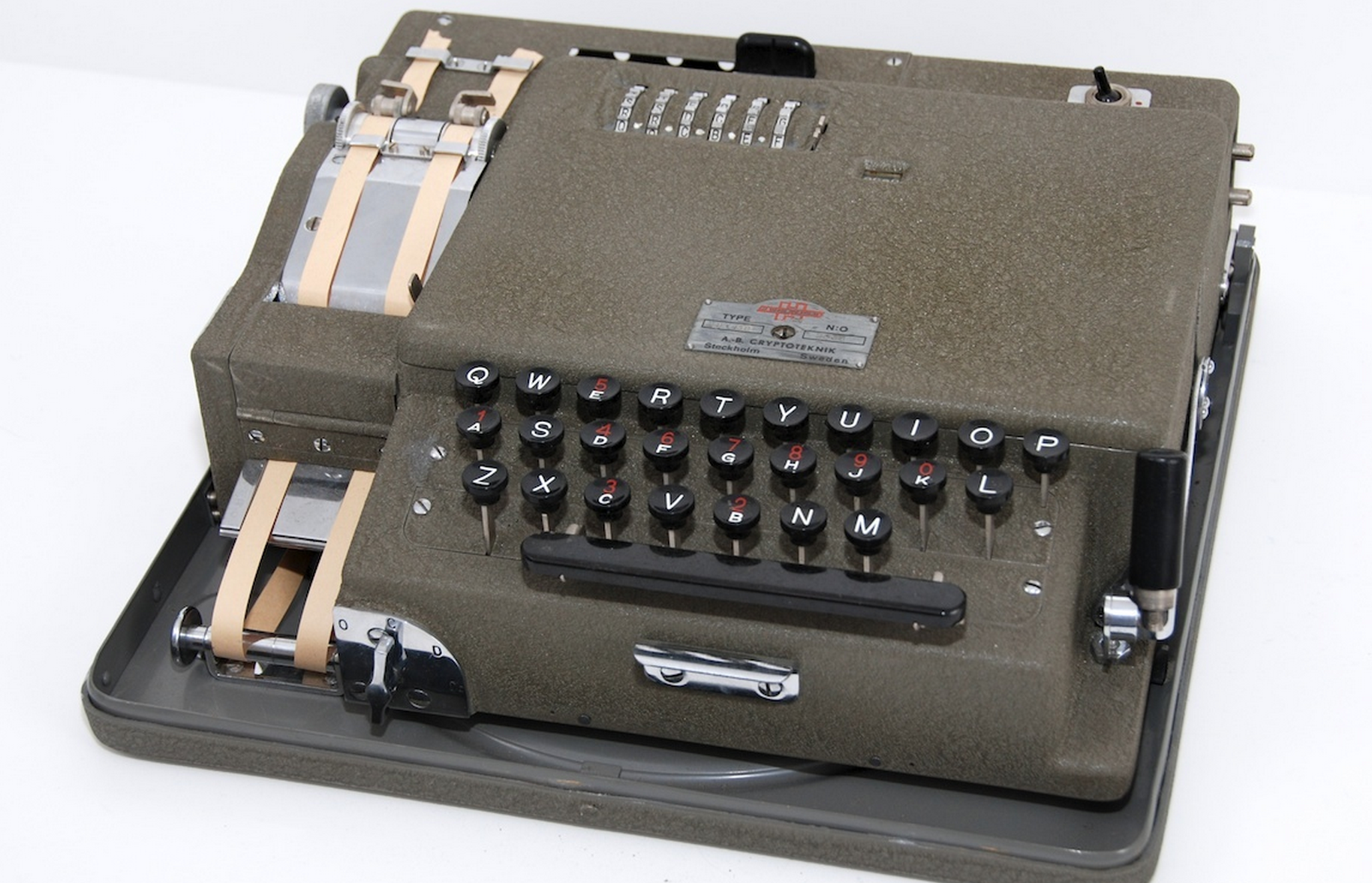
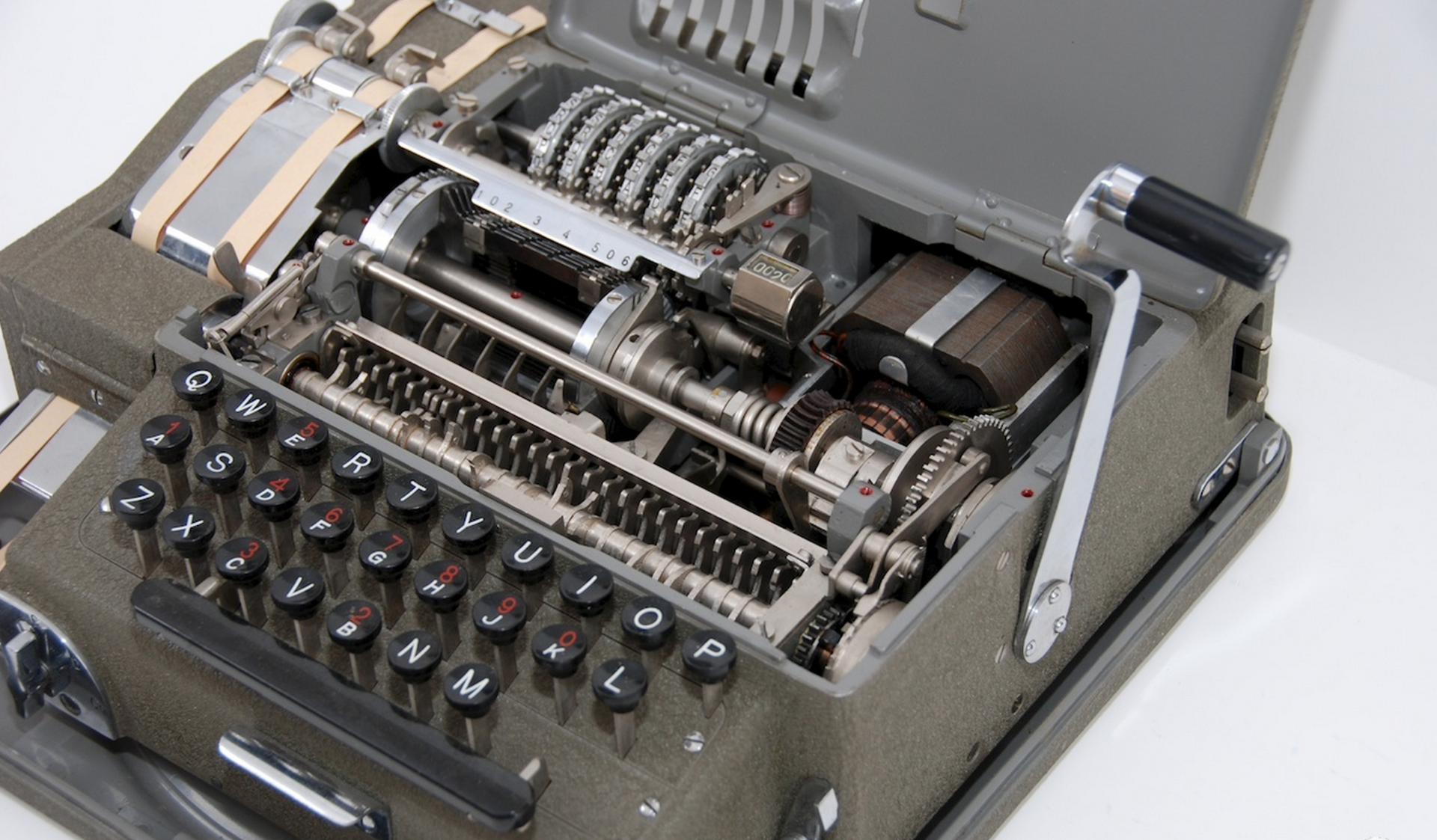
The machine is 34 x 32 x 12 cm in size and, therefore, significantly larger than its “manual” colleagues. It required an external power supply. In addition, the VS-38 was equipped with two printers on the left; one for plain text and one for encrypting text. The text was printed directly onto a narrow paper tape, and both printers could be used simultaneously.

C-446 - mechanical cipher designed by Boris Hagelin Cryptoteknik in Stockholm (Sweden) in 1944 -1945. The machine is almost identical to the previously invented C-38 (M-209), the difference is the presence of two printers on the left: one for plain text and one for cipher text. The C-446 was used by many armies around the world, including in Norway and the Netherlands. The car was compatible with C-38, M-209, BC-38 and BC-543.
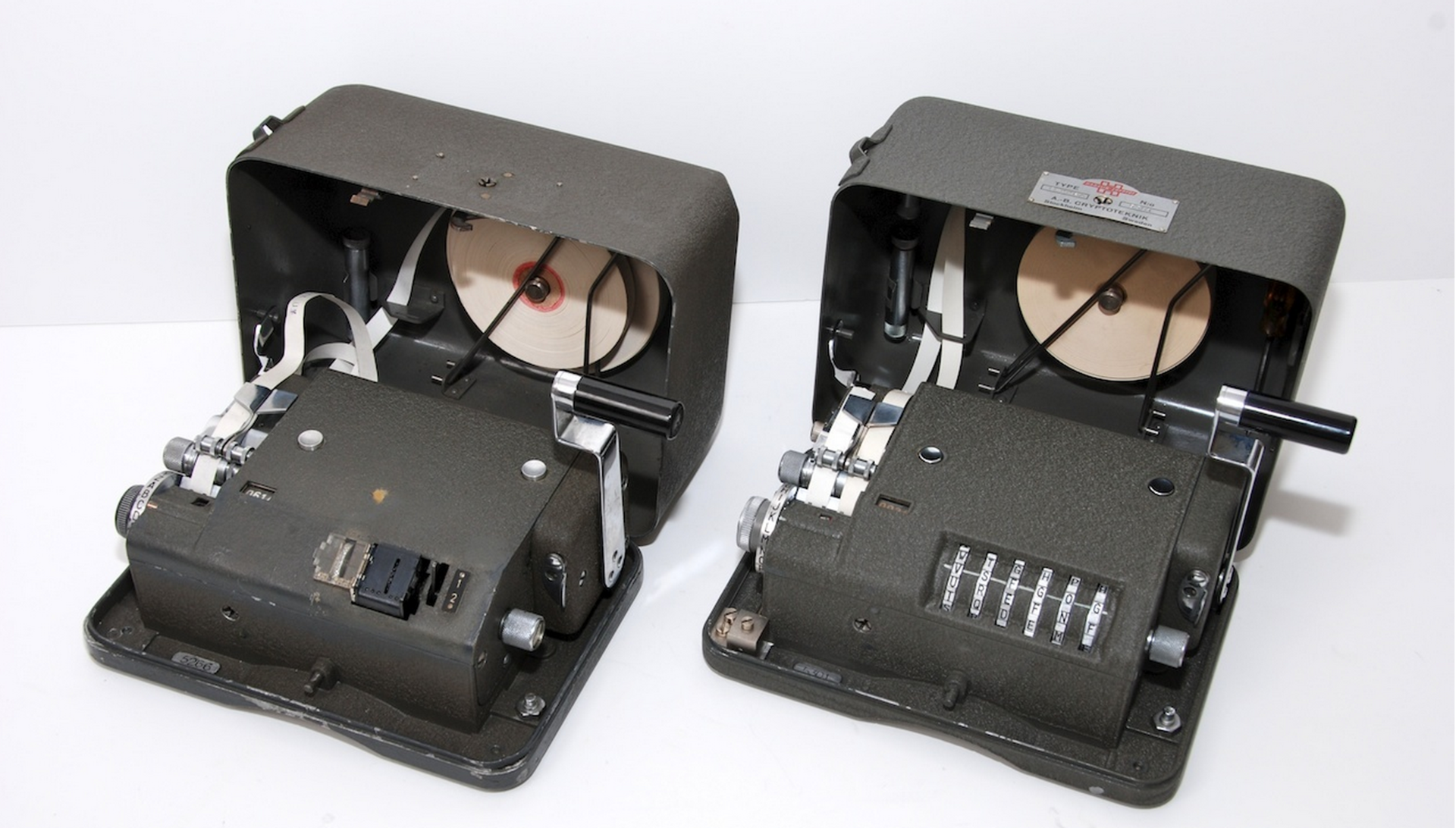
BC-543:
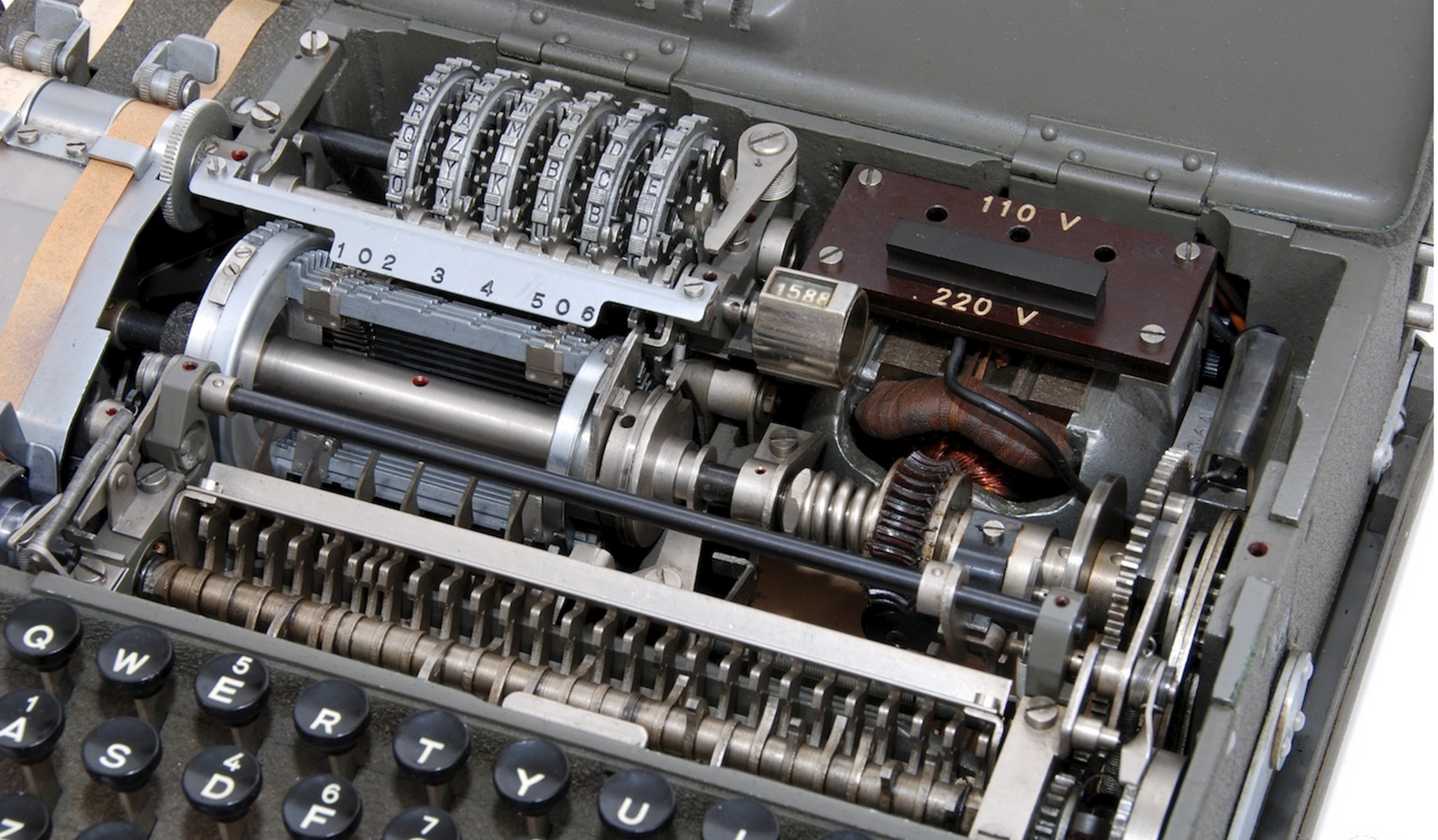


In the postwar years, Hagelin's research units and production facilities were concentrated in Stockholm. But since Swedish law gave the government the right to requisition inventions that it needed for national defense purposes, Hagelin decided to transfer his research work to the Swiss city of Zug in 1947 (tax privileges were granted) and in 1950 all divisions of Crypto AG were there.
Already in 1952, based on the design of the C-36 encoder, an improved C-52 model was created, which enjoyed tremendous success in the market, and many other models of encryption devices that formed the CX series, which were also sold with great success all over the world. Among them, the CX-52 model, as is commonly believed, is one of the most successful Hagelin mechanical cipher machines.
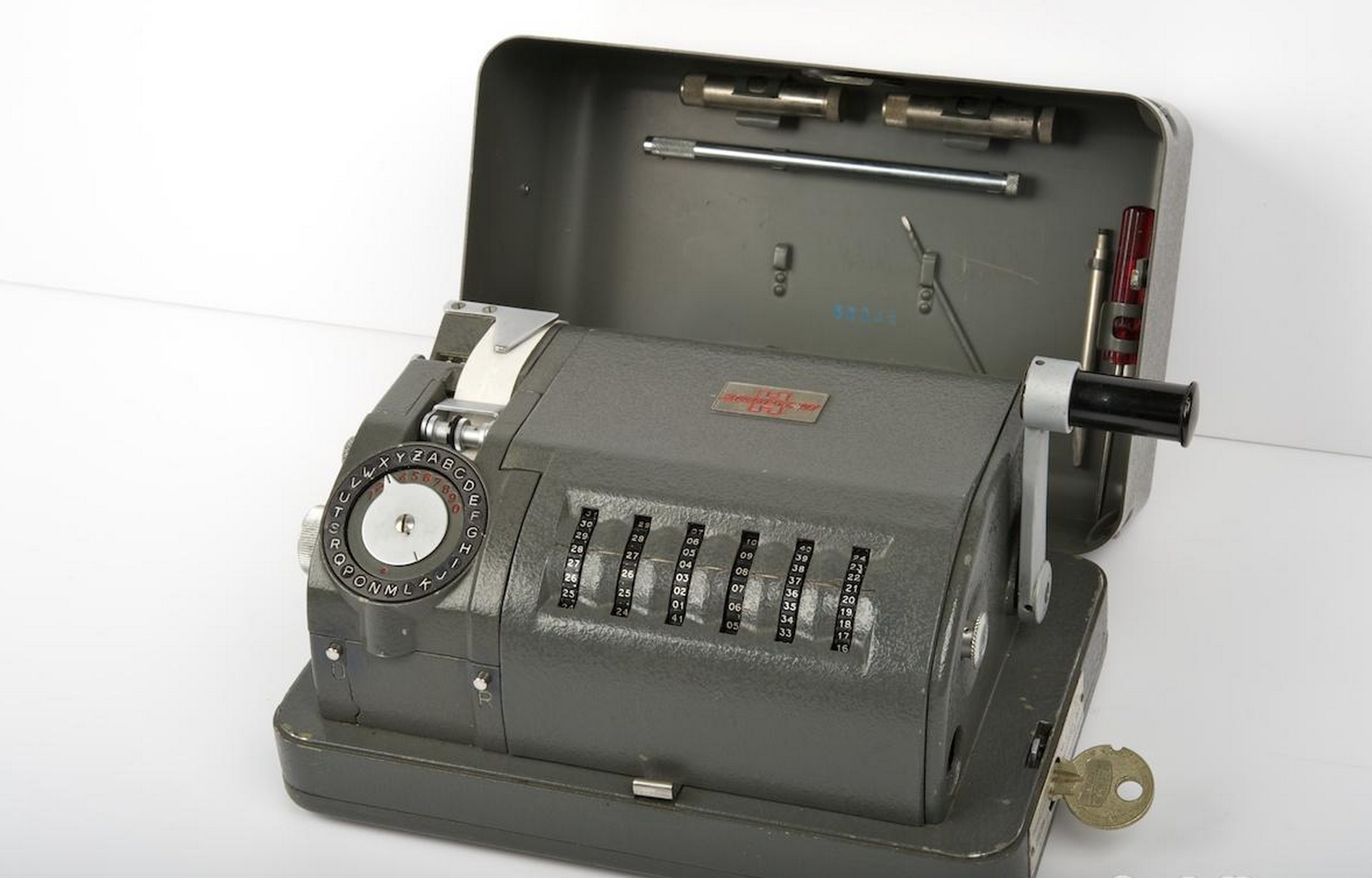
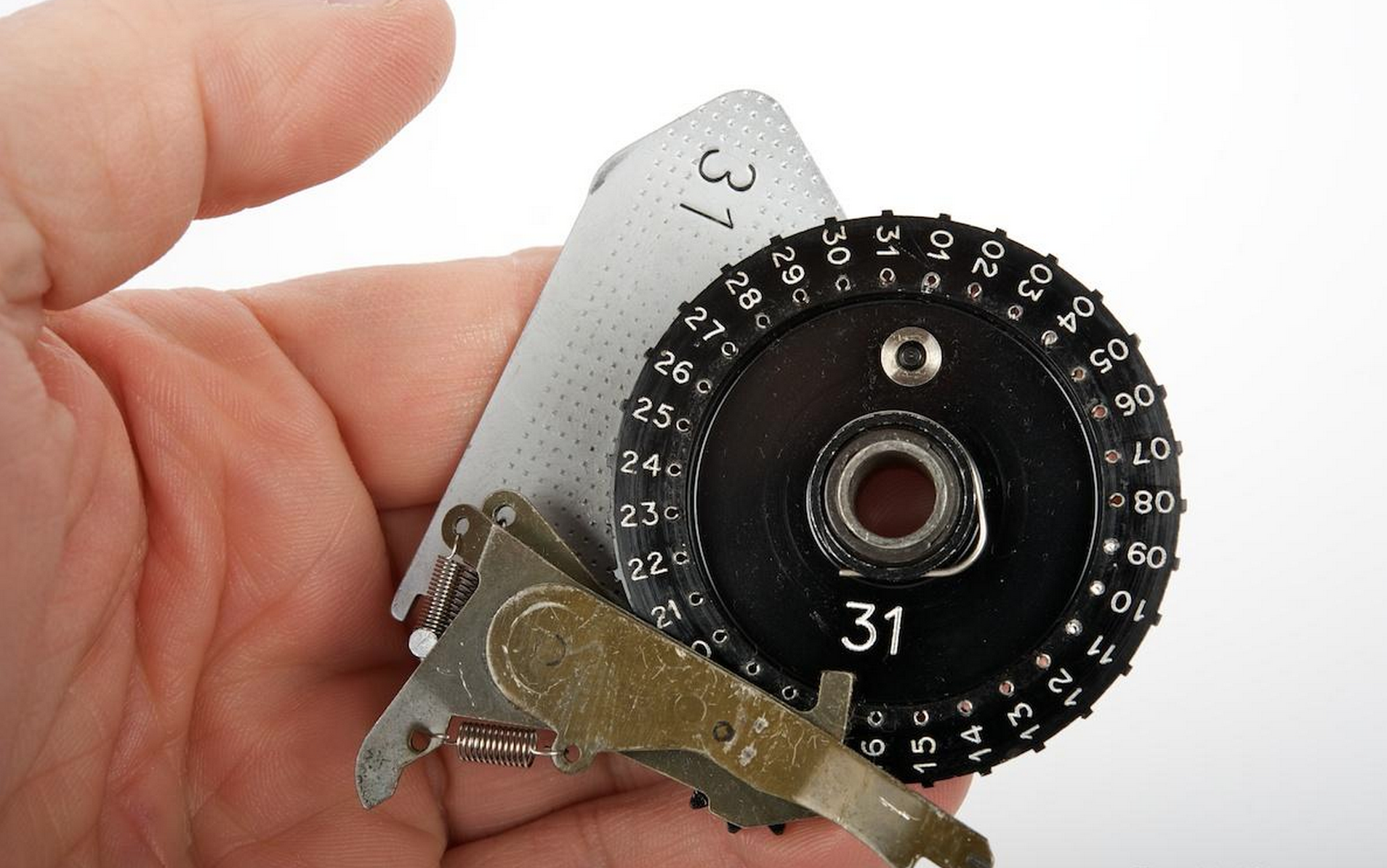
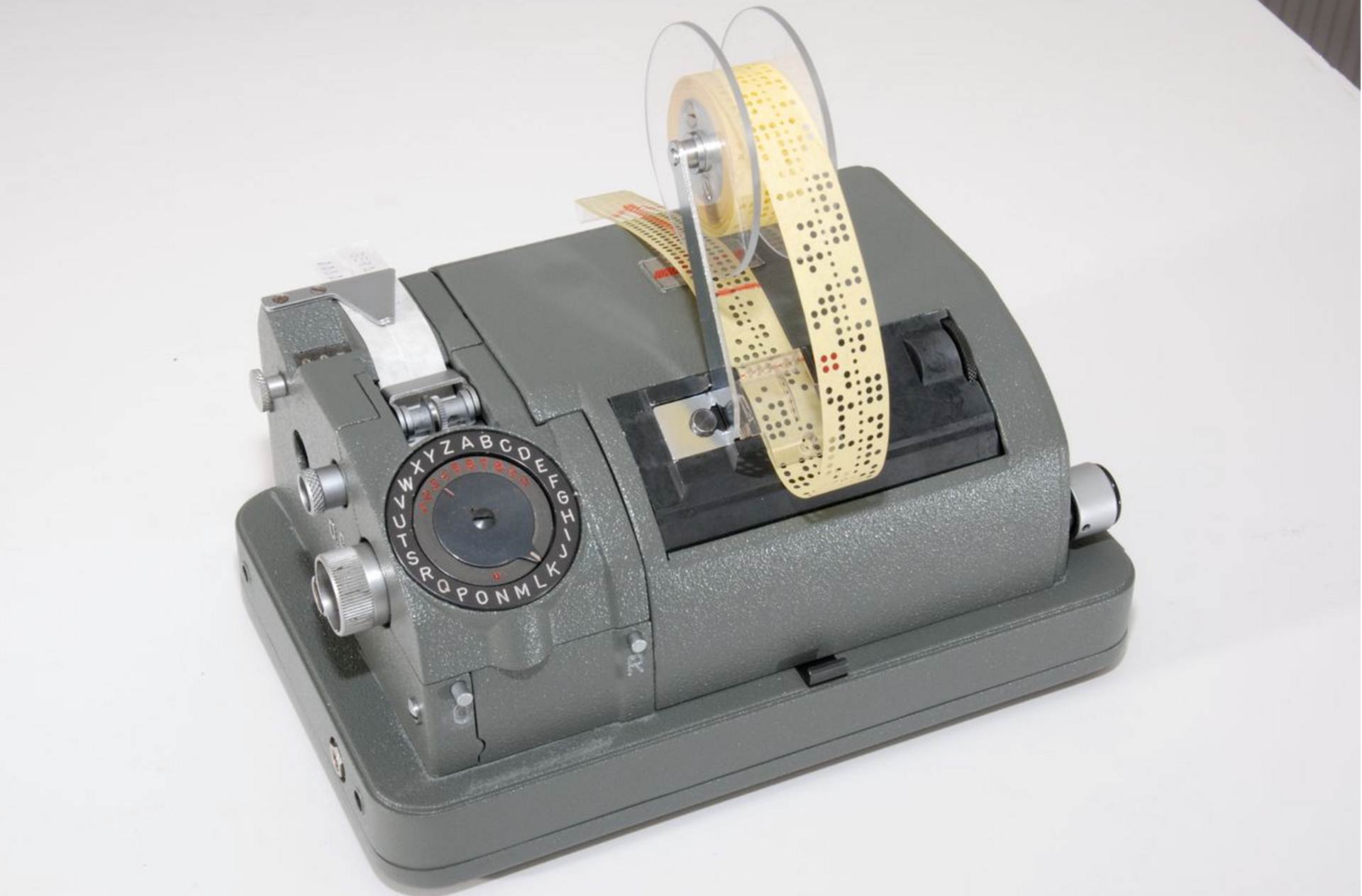
C-52 and CX-52 were notable for their “flexibility”: they were easily customized according to customer requirements. You could have one alphabet (or character set) for encrypting text, and another for plain text. It was convenient when the text was transmitted through international channels. For example: Arabic characters for plain text, and Latin characters from A to Z for encrypted text.
This is the standard version of the CX-52. This is a 6-wheel cipher machine with a large number of customizable options. The total amount of practically possible keys to this cryptomachine machine is 4.13 x 10 99 , which is an astronomical figure.
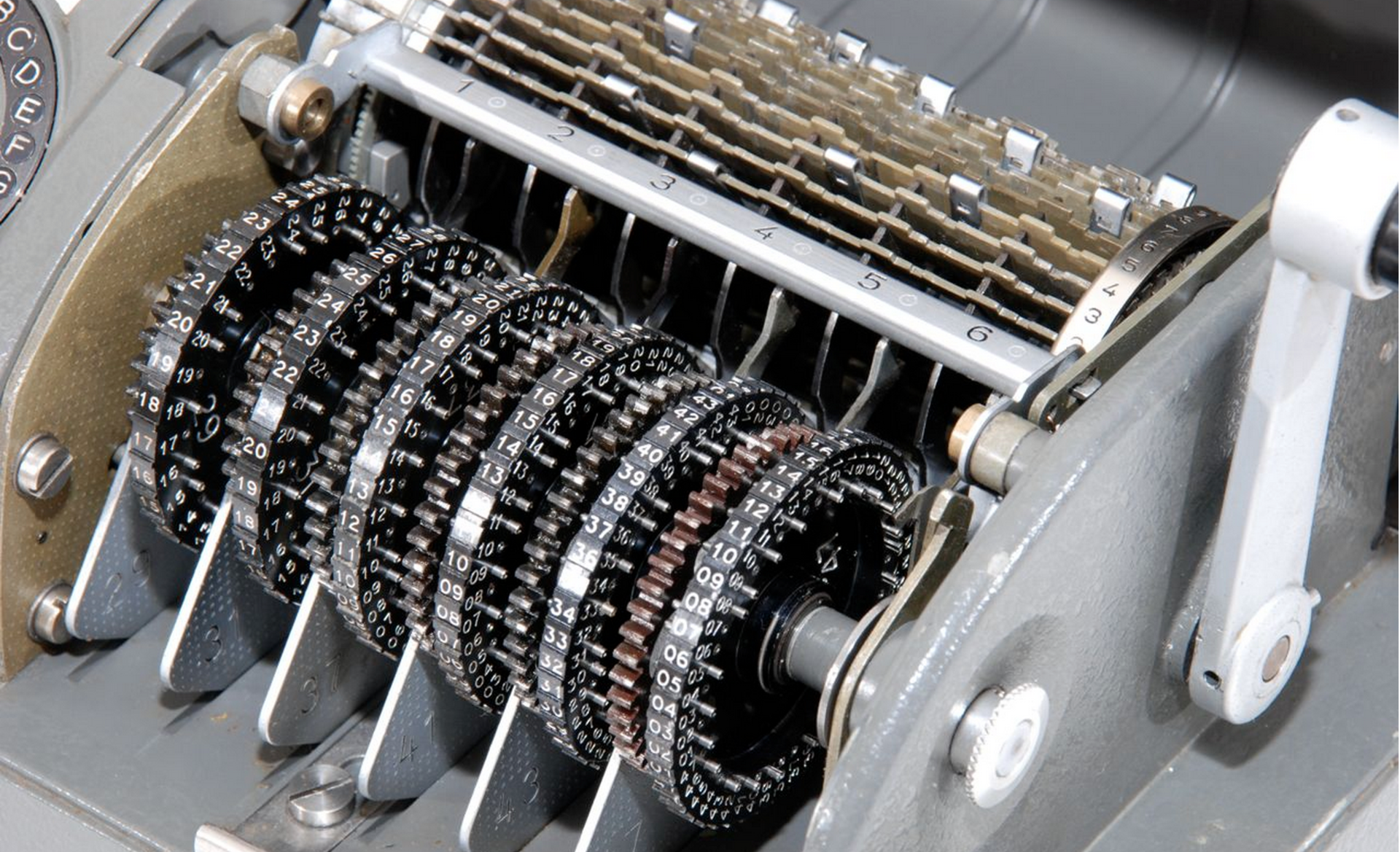
Below is the Arabic version of this model:
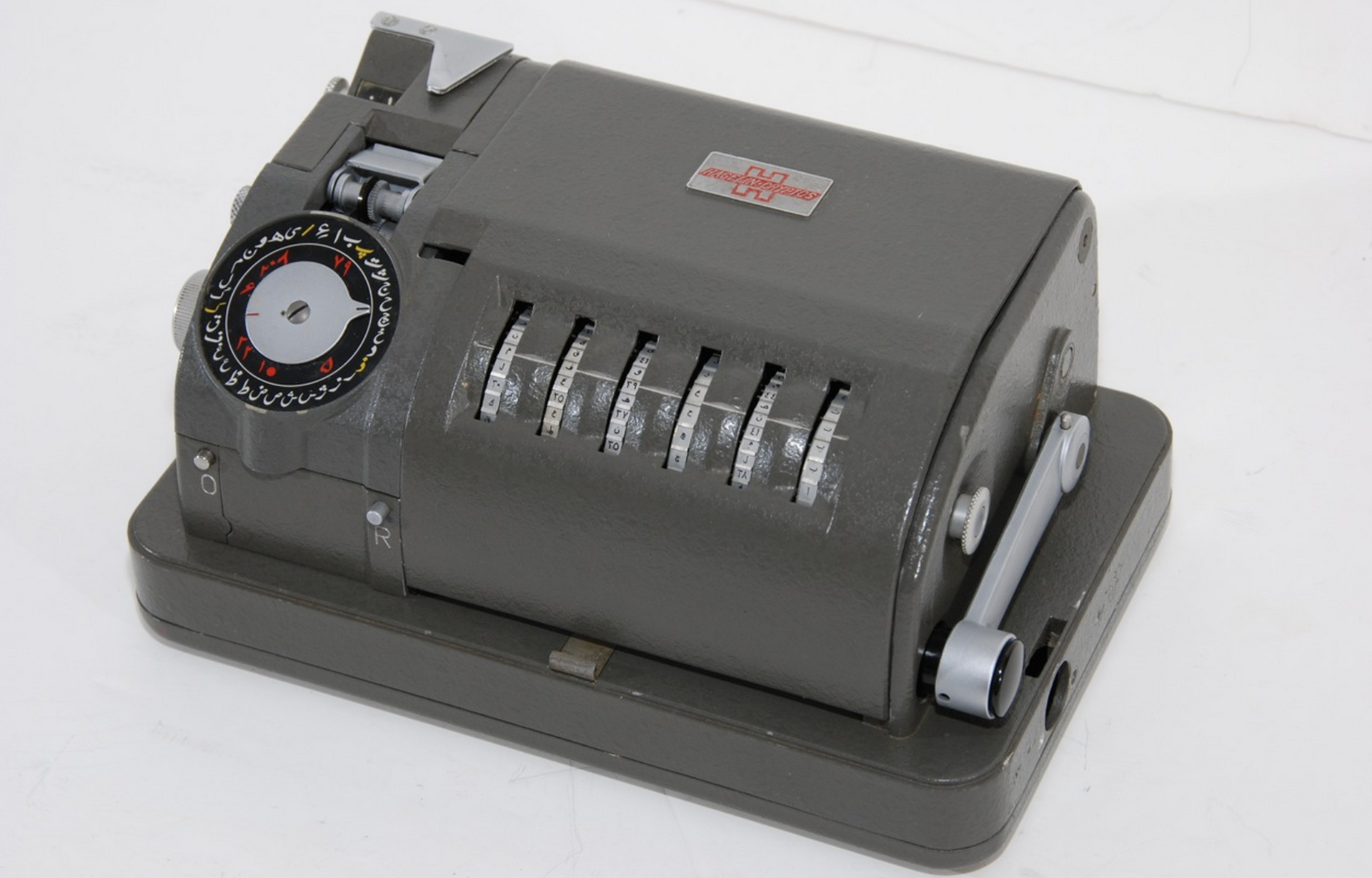
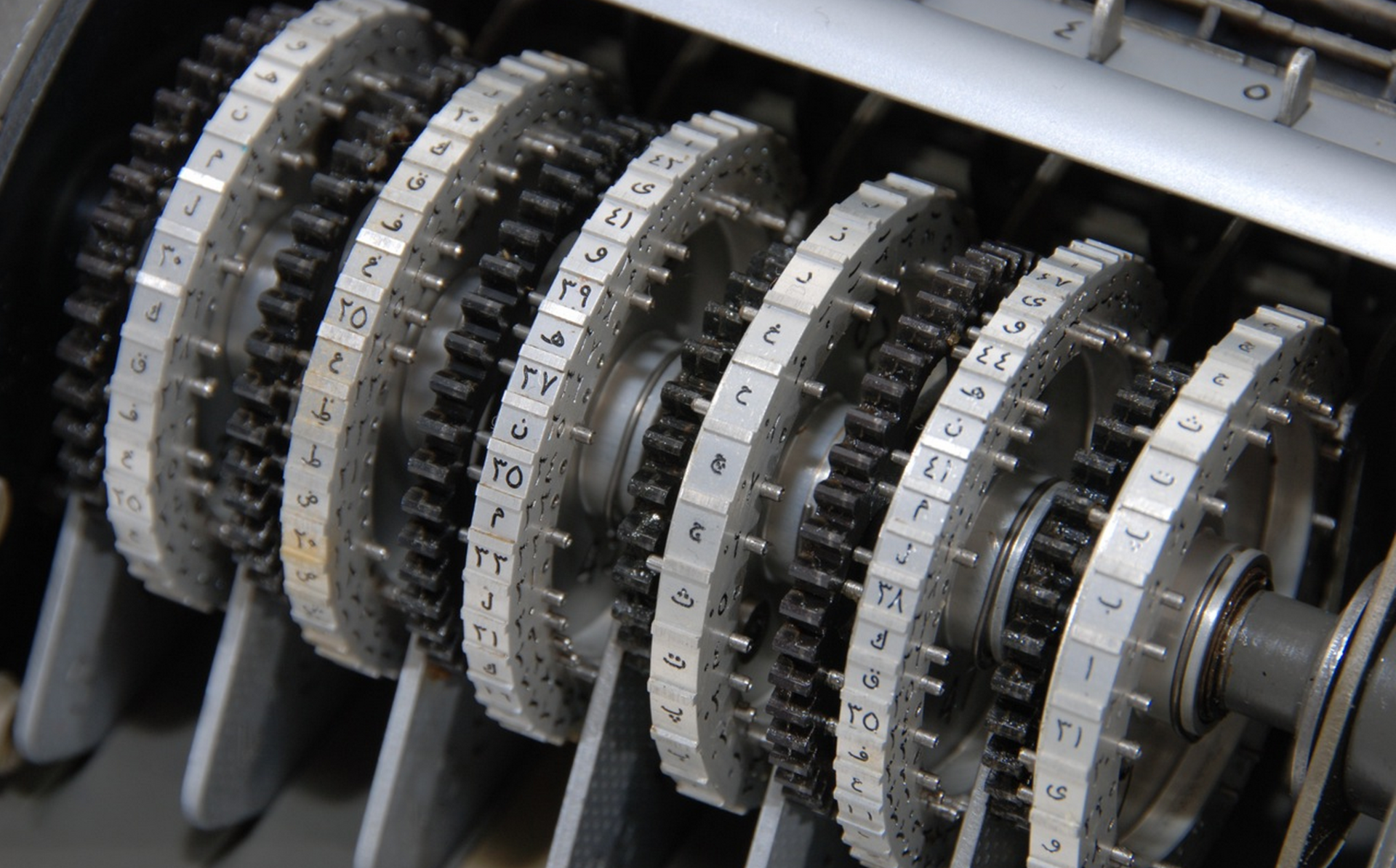
Version for learning work on the cipher machine:
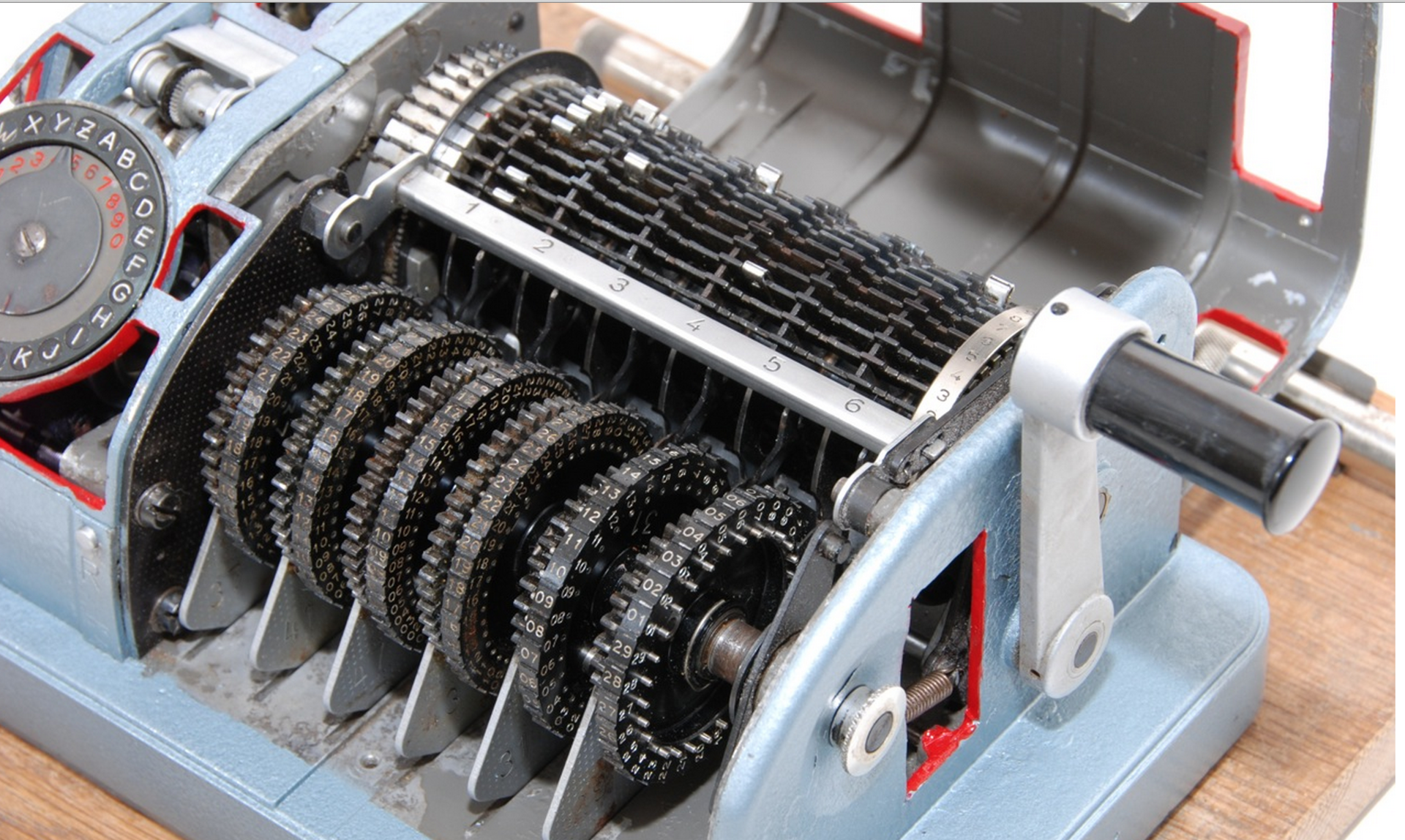
Below is a C-52 b CX-52 cryptanalysis:
In the 1950s, there was a need for encryption of teletype transmissions with the inclusion of an encoder between the teletype and the line, so that the operator could print the plaintext, and the transmission along the line was encrypted. In Zug, T-52 and T-55 encoder prefixes were created, which could work with teletypes of various manufacturers.


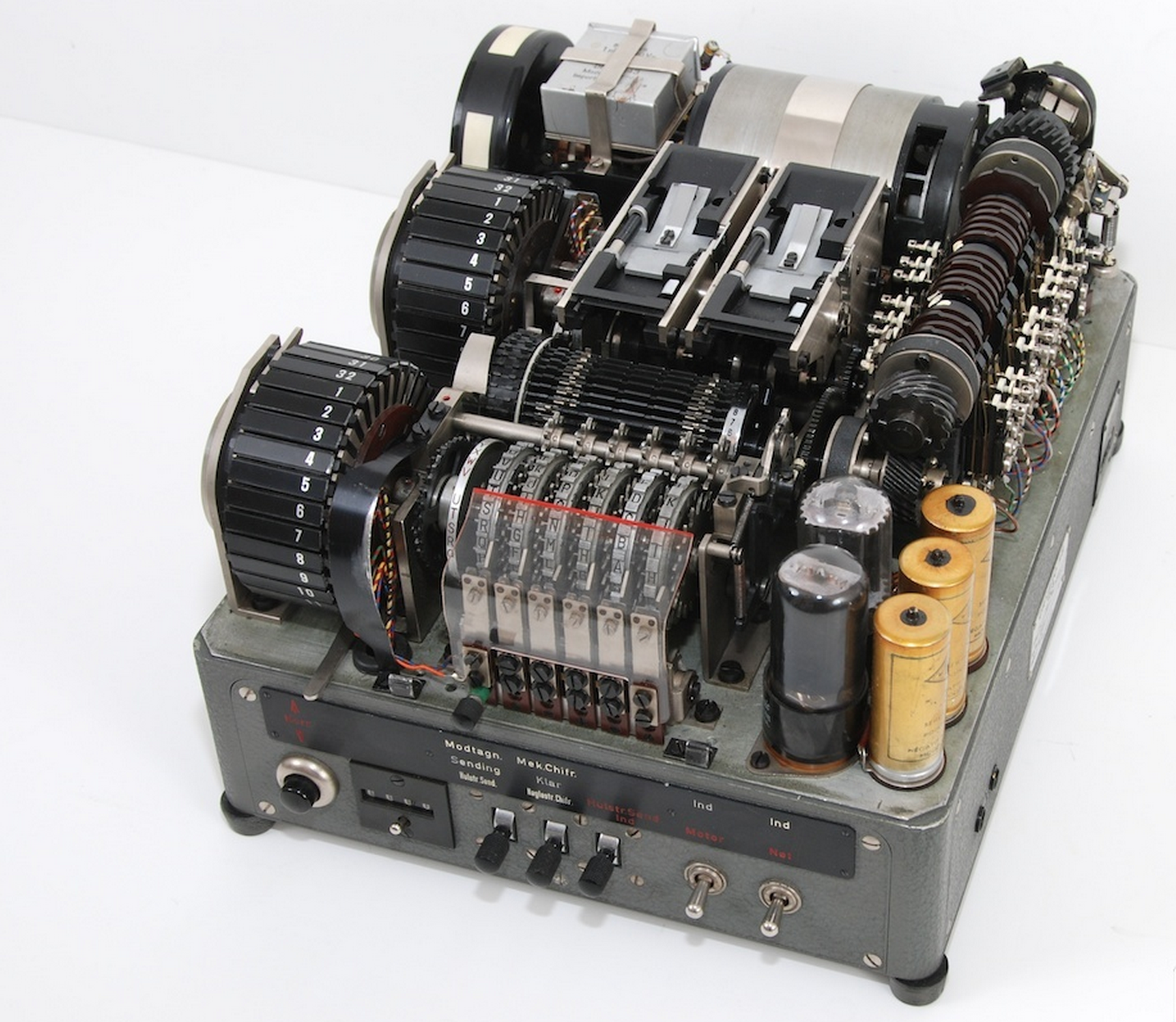
Models of the mechanical family CX- ... gradually increased in size, and a number of customers have a need for a real "pocket" model. In his famous “pocket” mechanical cipher machine CD-55 and then CD-57, Hagelin applied a construction principle similar to the design of the pocket calculator CURTA. On this small mechanical masterpiece, which was in great demand - over 12,000 machines were sold to various countries - it was possible to work with the thumb of one hand, while the other hand remained free to write encryption or decryption. The dimensions of the device are 137 x 80 x 40 mm and it weighed only about 1 kg. It consisted of two parts: a cast aluminum case, which contained all the mechanical parts, and a hinged cover, which was opened by pressing a small button on the top of the device.
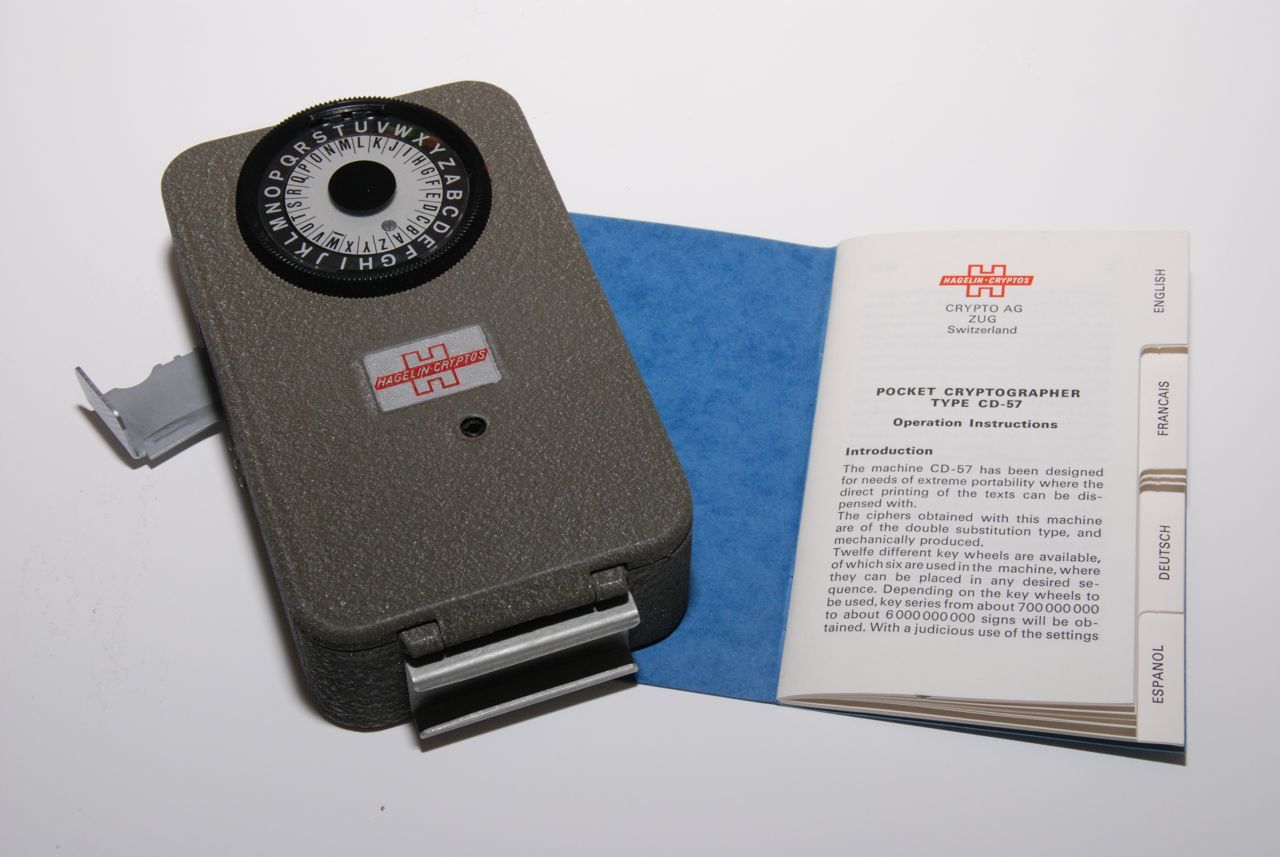
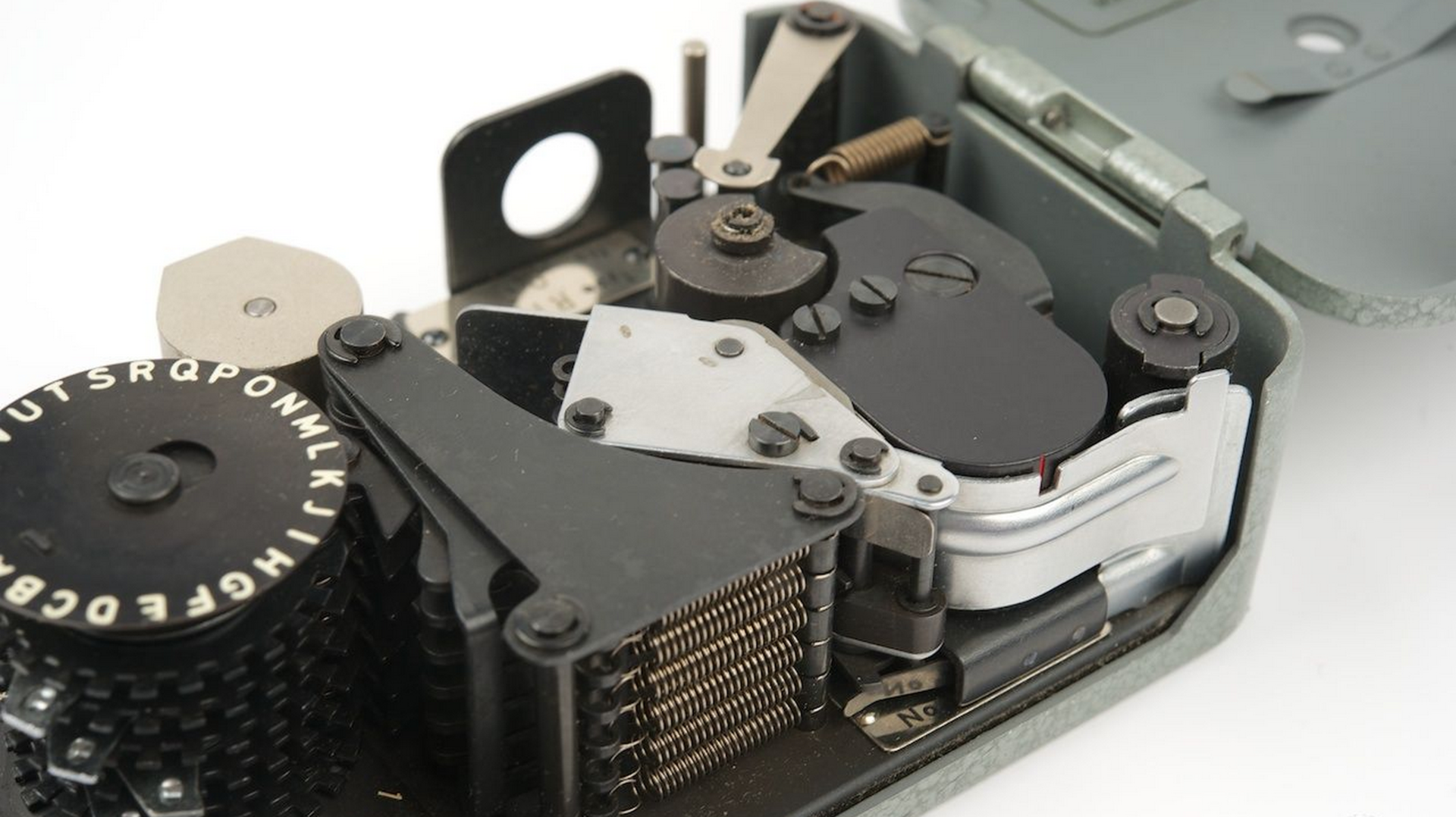

Commercial success stimulated Hagelina to create new designs of a pocket cipher machine with the hope of expanding the market. Despite the advent of the electronic era in the cipher building, they were much later constructed on the basis of the CD-57 multi-alphabet models: CDS-62 with an add-on cylinder of 32 alphabets and CDS-78 with inserted flat alphabetic cards.
In 1977, Hagelin created the NS-520 pocket model, one of the first fully electronic cipher machines that looked like a calculator. It was part of the family of compatible CRYPTOMATIC cipher-machines — -530 (version in the case) and -550, -570, -580 (desktop models). In memory of the phenomenally successful creator of the most popular cipher machines in the world, the models manufactured by Hagelin Cryptos / Crypto AG, created by him, continue to be called HC-xxxx.
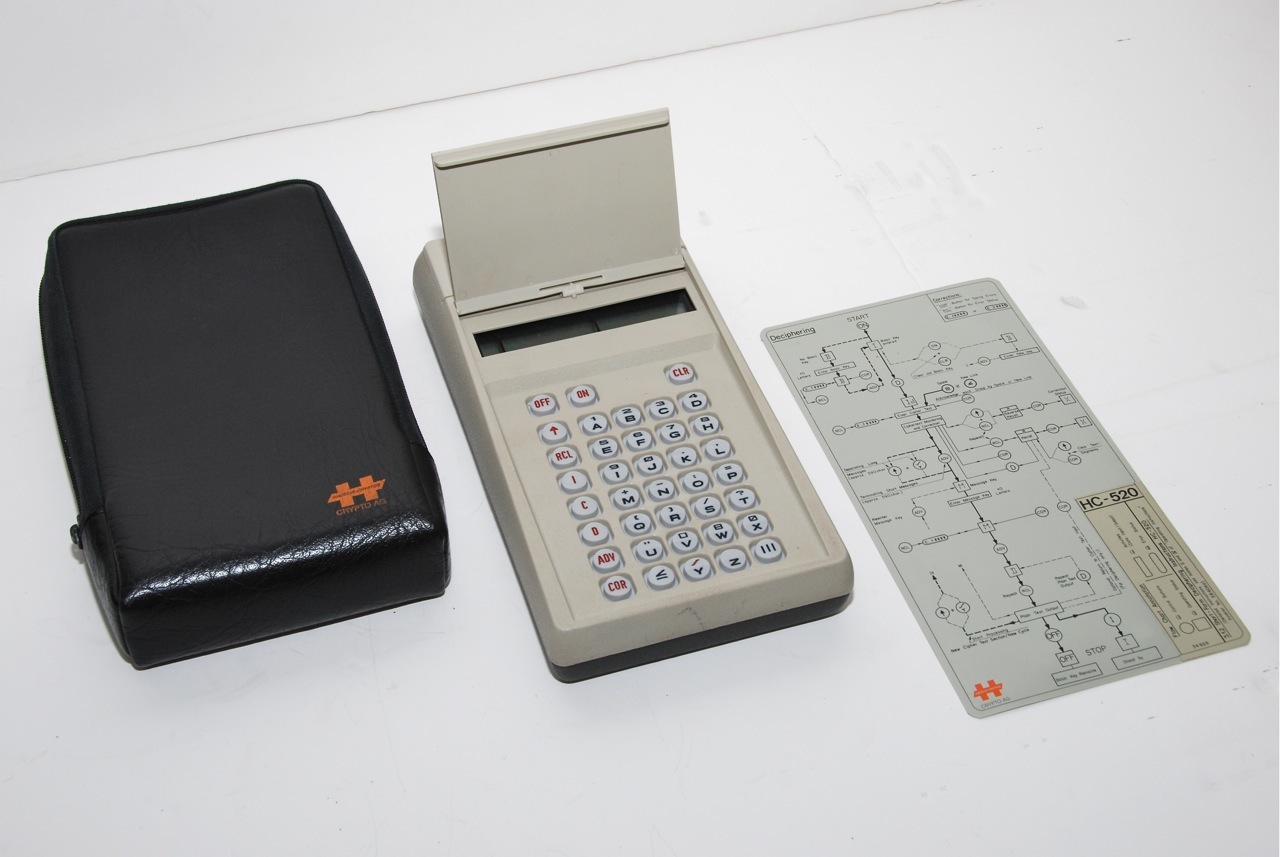
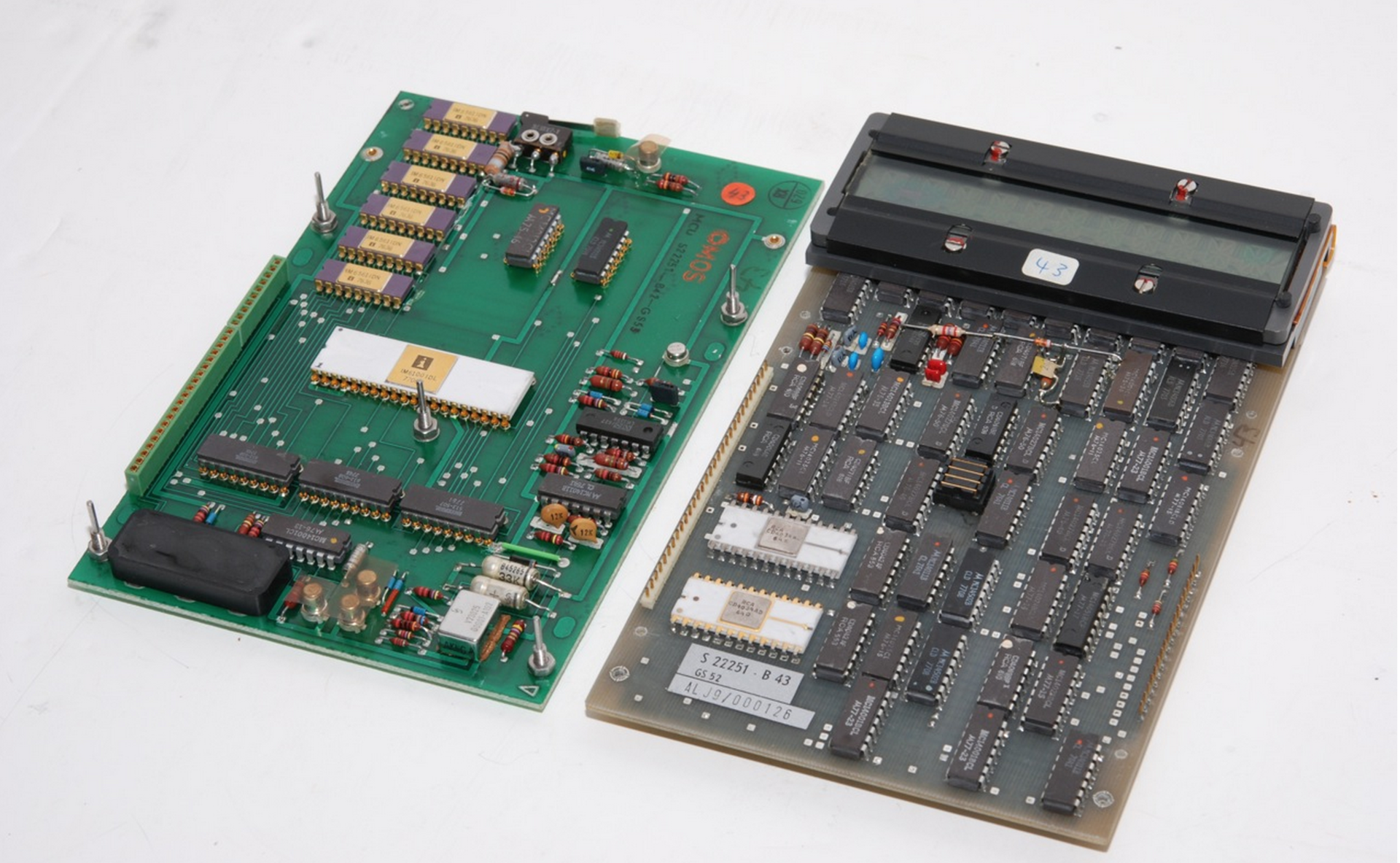
The HC-530/535 was a portable electronic cipher machine developed by Hagelin in Switzerland in the late 1970s. It belongs to the "family" of machines CRYPTOMATIC 500, and was one of the first fully electronic encryption machines. The car consisted of a standard machine keyboard and a small LCD display directly above it. Behind the car was a small built-in thermal printer. To the left of the keyboard was an acoustic adapter.

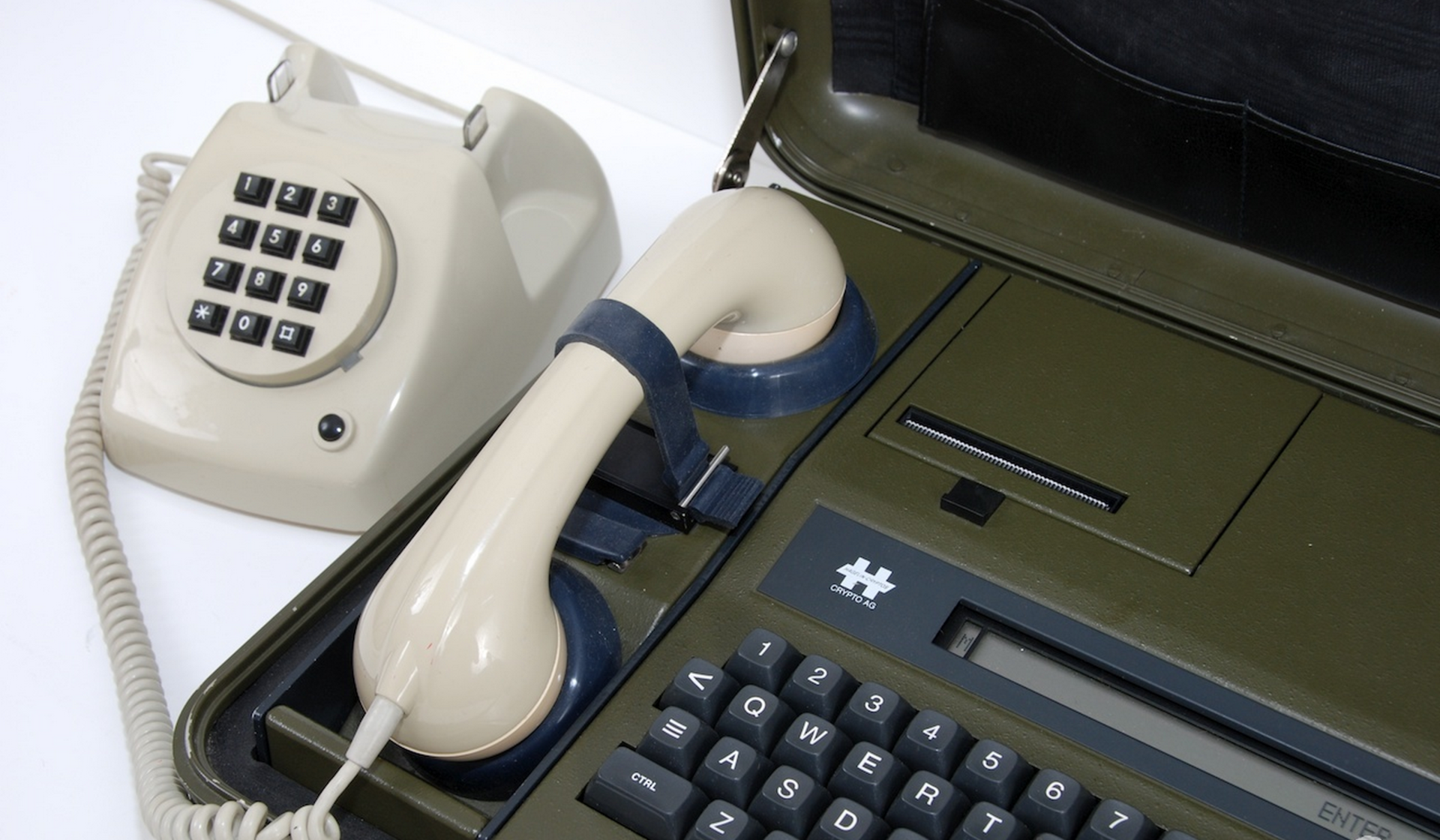
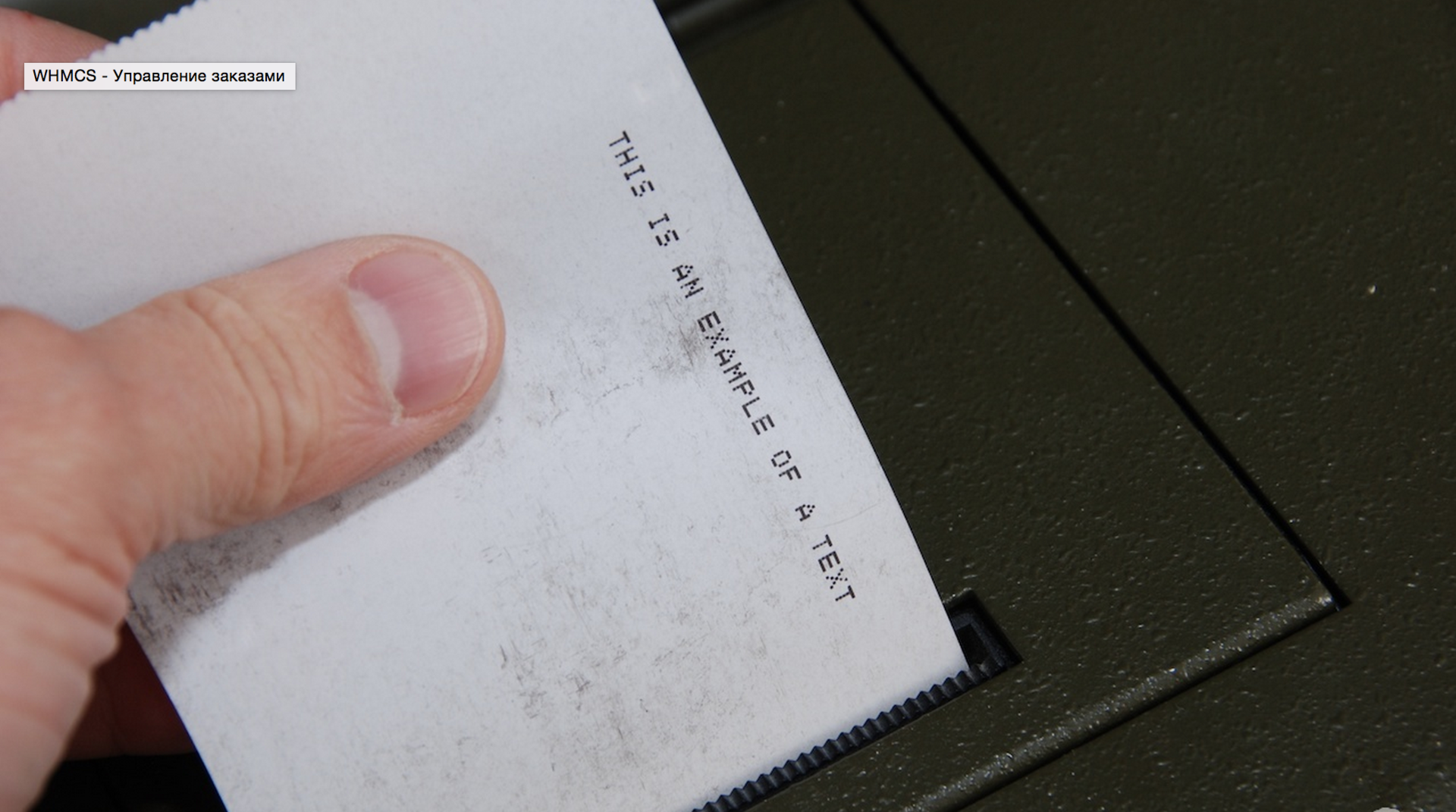
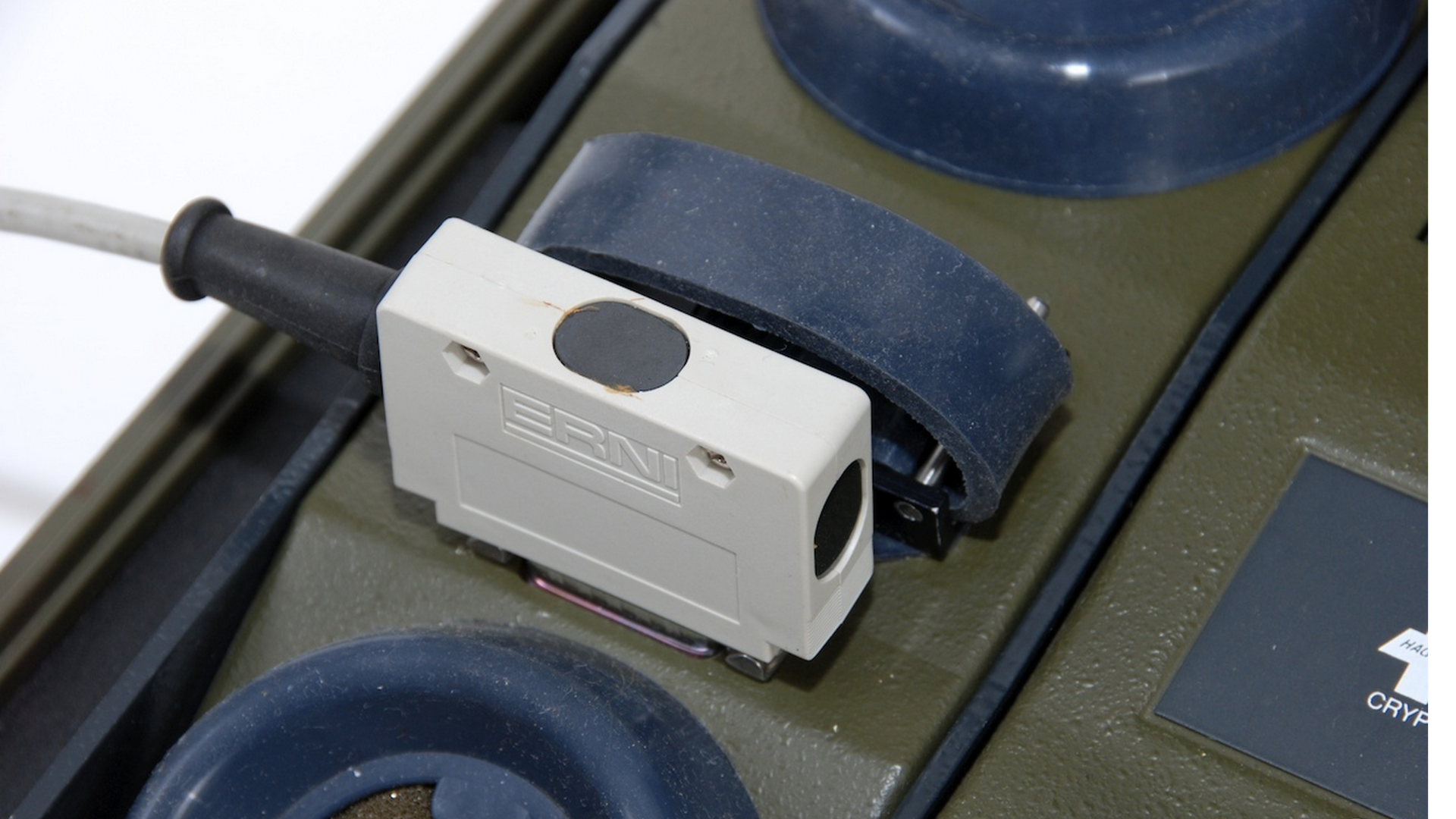
Crypto AG

Crypto AG, as a legally and economically independent Swiss company, concentrates its efforts on the development, creation and implementation of individual cryptographic systems. It is free from any export restrictions and does not require the deposit of keys. The basis is an individual secret for each customer, which is not used by anyone else.
In each device, encryption processes proceed in a shielded, protected module, so that the protection parameters and the key are stored encrypted only in the module and are not accessible to anyone in clear text. The unique ACC control tool - Acceptance Cipher Check provides the ability to self-test the protective function on a scientific basis and at any time.
Crypto AG sells encryption technology to government, government and commercial organizations in more than 130 countries around the world. The development of security systems for all widespread information and communication technologies, production and testing in the company are carried out by 300 qualified scientists, cryptologists and engineers.
Boris Hagelin died on September 7, 1983, but to this day the company he founded is one of the world's largest manufacturers of cryptographic technology.
From the book "code crackers" secrecy for sale:
PS We conduct a campaign specifically for Habr's readers. Post with the details here .
There are no communication applications where solutions developed by Crypto AG, which was founded more than 60 years ago by the talented cryptographer Boris Hagelin, would not be applied.

')
The range of equipment and software of Crypto AG is exceptionally wide. The company is known not only encryption for government and military communications. In offices, much of the daily messaging and data still goes through classic channels - PSTN / ISDN, analog or digital telephony and fax. Confidentiality of talks, faxes and information in laptops is provided by a number of Crypto AG hardware solutions: PSTN Encryption HC-2203, Secure GSM HC-2423, Fax Ecryption HC-4221, Crypto PC Security HC-6360, Crypto Laptop HC-6835 and others. For military and civilian applications developed COMSEC and TRANSEC security systems, universal crypto platforms running in various ranges from HF to IP networks: Secos 400/610, CSE-160, CSE-660, HC-2650.
Ethernet technology, which is implemented in a number of encoders of the HC-84xx and HC-85xx families, is used for efficient voice and video transmission; office model HC-8555 provides encryption speed in duplex mode of 10 Gbit per second. Such small-sized handheld devices Crypto Mobile Client HC-7835 / -7845 IP VPN are compatible with all other IP VPN devices from Crypto AG of the HC-78xx family to protect E-mail, VoIP, data or video communication among office IP VPN devices.
The HC-9300 Desktop Crypto security desktop platform, which, after the Crypto Mobile Client HC-7835, acts as an encryption solution not just for one type of connection or one form of data, but for several.
This platform promises to be a tool of the future, ensuring the safe traffic of all electronic office communications. Such prospects are opened up due to the ability to easily load various security applications onto the platform, for example, Fax Encryption HA-4500, Voice Encryption HA-2500, upgrades and system updates. The end devices can be ordinary IP phones, and encryption will be carried out by the HC-9300.
Who is Boris Hagelin?
In the city of Azhikent (Russian Empire), located on the territory of modern Azerbaijan, Boris Hagelin was born in 1892. Until 1904, the boy studied at a Russian school, later at a Swedish school, after which he entered the Royal Institute of Technology in Stockholm. In 1914 he received a diploma in mechanical engineering. He worked for 6 years in the Swedish branch of the American company “General Electric” in Baku and spent about a year in the US in the service of the company “Standard Oil”.
In 1915, Swedish engineer - inventor Arvid Gerhard Damm , who was interested in cryptography, together with Captain 3rd Rank Olaf Gulden, head of the Royal Naval College in Stockholm, founded the small company Aktiebolaget Cryptograph . Within five years, the company created several prototypes of encryption machines, which were unsuccessful in their designs.
Arvid Damm created patent No. 52 279 of October 10, 1919. Two cipherdisks rotated above and below the horizontal fixed plate, gears allowed each letter of the plaintext to be rotated to a different number of positions. Because of its bulkiness and complexity, this encryption device has never been widely used (although Dam is considered one of the inventors of the encryption disk and the founder of an entire era in cryptography, along with the American Edward Hugo Hebern, who patented his device in 1917, the Dutch Hugo Alexander Koch and the German Arthur Sherbius). Koch in 1919 built and patented a cipher machine, because of the high price of orders did not follow, disappointed, the patent was sold to Arthur Sherbius, who improved and perfected the encoder (known to us as Enigma).
In 1921, Boris Hagelin was appointed to represent the interests of the company Damme. The company rented a room that consisted of 3 rooms in the center of Stockholm, and it employed more managers than the actual workers. Apart from Damme himself, the following were among the personnel: executive director, technical director, draftsman and accountant. Damm was engaged in the development of telegram for radiotelegraphy, collaborating with major telegraph companies such as Marconi, Telefunken, TSF and Western Union. Later, together with his brother Damm developed the Electrocrypto B-18 with the so-called simplified rotors. The Electrocrypto B-18 was a cumbersome machine and consisted of 3 main blocks: keyboard input, a cipher block from the electric drive of a direct-printing electric typewriter.
And on the basis of this machine, Hagelin invented the world's first electromechanical encoder in 1921, a two-rotor prototype of the cipher machine. It was a model B-21 with a display panel of 25 electric lamps.




In the final versions of B-21, electrified from the 110/220 volt network, electromagnets were used for stepping movements of the rotors. In the office version, the ciphering machine was connected, instead of the disconnected 25 lamps, with an electric Remington typewriter. Traditionally, the name of all cipromachines of Boris Hagelin, who had a keyboard, subsequently began with B-xx.
In 1925, Hagelin got acquainted with the “riddle” - the Enigma encryption machine. Soon he made a loud statement that he could create a more suitable machine made in Sweden. To perform this work Hagelin was allocated a period of 6 months.

scheme of the machine in the encryption process
The manufacture of the B-21 encoder sample cost AB Cryptograh 500 SEK, approximately $ 110 at the then exchange rate. Shifromashina had a similarity with Enigma, but carried out encrypting permutations of letters in a 5x5 matrix under the control of 4 pin rotors, which provided higher secrecy in comparison with the Sherbius machine.
Model B-21 was successful and was adopted for service. Boris Hagelin sold it also in several other countries. The cipher machine had an alphabetic keyboard for entering plaintext and a display panel of 25 lamps, which highlighted the received letters of the ciphertext.
In 1925, Hagelin headed the company Aktibolaget Cryptoteknik (after the death of Damme). Financing of the company stopped and Hagelin was forced to look for customers from other countries.
Cooperation with the French army
In 1932, France announced a competition for the development of an encoder for its army. This system was supposed to be so compact as to fit into the pocket of an army overcoat and be used directly on the battlefield. In addition, the encoder should have been provided with an independent printing device. Already available encoders did not meet these requirements. And this challenge Hagelin accepted.
B-21s became interested in French military leaders, but they insisted on two important improvements: the cipher machine must be portable and capable of typing ciphertext. As a result, Hagelin developed a mechanical and electrified version of the four-rotor B-211 cipher machine, replacing the lamp panel with a printing mechanism. This encoder weighed about 17 kg, worked at a speed of 200 characters per minute and was placed in a wooden case the size of a large briefcase. The cipher machine created by Hagelin met the needs of the French army of the time and was put into service by it.



The French army with confidence reacted to the degree of secrecy encryption texts machine B-211. More than 500 such ciphers were built at the telephone station of LM Ericsson.
Cars B-211 sold much more successfully than the German Enigma. Even before World War II, Hagelin sold 2 cipher machines and a Soviet trade mission in Stockholm. Here are just Russian alphabet contains more than 30 letters, and therefore two, rarely used, had to be removed from the keyboard and on the rotors. In the expanses of our country, it is known as K-37. After the end of the war, the French army additionally purchased a hundred B-211.

Russian version
In 1934, at the request of the French cipher bureau, Boris Hagelin, using the design of the counting mechanism of the money-changing machine, developed the fully mechanical C-35 cipher machine, which was significantly smaller than the others of this class. She easily switched between encryption and decryption modes and could print texts on a narrow strip of paper.



In October 1937, the French approved this car. Six copies of a slightly modified encoder, called the C-36 , were handed over to the Swedish naval forces for testing. In fact, the C-36 encoder was the same as the C-35, but with the presence of an additional cover covering it with a key and a rubberized case. The changes made it possible to avoid ingress of water and dirt in the field conditions for which the C-36 was created. This device implemented the gamma code, differed by small dimensions, 83x150x178 mm, and weight.



C-36 received the highest marks from French specialists. As a result, France ordered a batch of 5,000 at once, which brought Hagelin’s firm substantial profits. At about the same time, Boris Hagelin created miniature encoders for the French police — pocket equipment that was set in motion by the thumb of his left hand. Right hand could write ciphertext. A number of these devices were also purchased by France.
In the pre-war years, the C-36 type machine, except France, was purchased for use on communication lines by the United Kingdom, Italy, Germany and some other European countries. According to some reports, the Germans even organized a "pirated" production and released about 1,000 copies, which were used by the Abwehr and the Foreign Ministry. An upgraded version of the C-38 was sold to the Swedish army in the amount of 5,000
pieces



Success in usa
This success story is not over, and, one can say, just started to gain momentum. Since 1936, Boris Hagelin corresponded with the Americans about the purchase of C-36, in the years 1937-1938, the inventor visited the ocean more than once. However, it soon became clear that the organization of mass production of encoders in Europe and sending them to America would be extremely difficult because of the outbreak of World War II. Hagelin decided to go to the United States and organize the production of C-38 directly in America, but it was not easy to leave the warring Europe. He later recalled:
It was impossible to get a regular visa, so I convinced the Swedish Foreign Ministry to send me to America as a diplomatic courier. My wife and I sent our luggage in advance and boarded the train to Stockholm. There we learned that Stockholm travel agencies canceled all trips to the United States. Then we decided to try to sail from Italy. With the drawings in the briefcase and the two disassembled encoders in the bag, we got on the Stockholm - Berlin express. We were lucky. With a crash we rushed through the very heart of Germany and three days later we arrived safely in Genoa. That night, the windows in the windows of the hotel where we stayed were broken - we accidentally decided to stay at the London Hotel, and Italy was already at war with England. But we still managed to go to New York with the last flight of the ship, sailing from Genoa.
Despite the difficulties, Hagelin got to the United States. The government expressed a desire to purchase an upgraded C-38 cipher machine. Americans were very pleased with this model, and therefore, it was decided to expand its mass production. In 1942, Smith Corona was established in the United States, which produced almost 400 such devices per day. Total company specialized in the manufacture of typewriters, has released under license more than 140,000 encoders. The encoder got its name Converter M-209 and was massively used in the army, in the link from the battalion to the division, and in the navy during and after World War II.




M-209 was extremely popular in the army, and all because it was small and light. The operator was trained to work on it already for a couple of hours of training, no special conditions for the secret storage of this cipher machine were required. But there was also the other side of the coin, German cryptographers opened the M-209 encryption for 4 hours, knowing this, the Americans used it only at the tactical level, in the field. Finally, the car ceased to be used after the end of the Vietnam War.
Simulator M-209
After the end of the Second World War, many countries purchased and used c-36/38 type cipher machines and their modifications on their communication lines. Hagelin received millions of dollars, being the owner of a patent for the invention of the encoder.
By 1940, the inventor's firm had its own brand AB Ingeniorsfirman TEKNIK, which existed until 1952. Hagelin cipher machines were sold in other countries, several copies were sent to Japan. By the end of the war, even German cryptographers showed no weak interest in Hagelin’s cipher machines, and began to produce copies of the BC-543 for their own use, called the C-41. About 700 of them were made, and in the postwar 1950s in Germany - about 10,000 cars of the C-41 version.
In turn, France also had the rights to manufacture this Hagelin rotary machine.
The BC-38 electromechanical cipher was designed and built by AB Cryptoteknik in Sweden. As the name implies, it was an upgraded model of the mechanical C-38. "B" was added as a prefix to the model number to indicate the presence of a keyboard. Thus, the VS-38 is actually a C-38 with an engine and a keyboard.


The machine is 34 x 32 x 12 cm in size and, therefore, significantly larger than its “manual” colleagues. It required an external power supply. In addition, the VS-38 was equipped with two printers on the left; one for plain text and one for encrypting text. The text was printed directly onto a narrow paper tape, and both printers could be used simultaneously.

C-446 - mechanical cipher designed by Boris Hagelin Cryptoteknik in Stockholm (Sweden) in 1944 -1945. The machine is almost identical to the previously invented C-38 (M-209), the difference is the presence of two printers on the left: one for plain text and one for cipher text. The C-446 was used by many armies around the world, including in Norway and the Netherlands. The car was compatible with C-38, M-209, BC-38 and BC-543.

BC-543:



In the postwar years, Hagelin's research units and production facilities were concentrated in Stockholm. But since Swedish law gave the government the right to requisition inventions that it needed for national defense purposes, Hagelin decided to transfer his research work to the Swiss city of Zug in 1947 (tax privileges were granted) and in 1950 all divisions of Crypto AG were there.
Already in 1952, based on the design of the C-36 encoder, an improved C-52 model was created, which enjoyed tremendous success in the market, and many other models of encryption devices that formed the CX series, which were also sold with great success all over the world. Among them, the CX-52 model, as is commonly believed, is one of the most successful Hagelin mechanical cipher machines.



C-52 and CX-52 were notable for their “flexibility”: they were easily customized according to customer requirements. You could have one alphabet (or character set) for encrypting text, and another for plain text. It was convenient when the text was transmitted through international channels. For example: Arabic characters for plain text, and Latin characters from A to Z for encrypted text.
This is the standard version of the CX-52. This is a 6-wheel cipher machine with a large number of customizable options. The total amount of practically possible keys to this cryptomachine machine is 4.13 x 10 99 , which is an astronomical figure.

Below is the Arabic version of this model:


Version for learning work on the cipher machine:

Below is a C-52 b CX-52 cryptanalysis:
Cryptanalysis of the HAGELIN C-52 cipher machine and similar machines based on known plaintext attacks.
We consider the HAGELIN C-52 and HAGELIN CX-52 family ciphering machines and their cryptanalysis capabilities using a clear-text attack. The HAGELIN machine consists of a set of encryption wheels (disks), each of which generates one digit of a binary number, and the substitution function maps binary numbers to a set of integers of the form Z modulo 26. The earliest versions of the HAGELIN machines had four encryption wheels with 17, 19, 21 and 23 positions, respectively. Then two other encryption wheels were added with 25 and 26 positions respectively. The most typical configurations used in the future are: for the C-52 version, the cars have a set of twelve wheels with 25, 26, 29, 31, 34, 37, 38, 41, 42, 43, 46 and 47 positions, respectively; for the CX-52 version, the cars have only six wheels with 47 positions. The following basic assumptions are used in a cryptanalytic attack: firstly, the ciphertext was obtained using a C-52 machine using six wheels, and, secondly, the cryptanalyst has 800 characters of plaintext and the corresponding ciphertext. The larger the sample size, the simpler the solution, but it is much more difficult to obtain such large samples.
A sample of 800 characters is, in the opinion of the author, the most acceptable compromise. For a consistent cryptanalysis strategy, you must run the following algorithm. 1. Determine the number of positions on the first encryption wheel. 2. Split wheel positions into two subsets. One subset containing active positions, and another subset - inactive positions. 3. Determine which of the subsets contains active pins, determining which of the subsets is most appropriate for predicting the number of positions for the next wheel. 4. Repeat steps 2 and 3 to determine the length and subset of the active positions of each wheel in turn. 5. Determine the function f, which displays {0,1} {n} -> {0, ..., 25}. In conclusion, the main ways to improve the encryption algorithm in order to prevent the above attack are given. For this, a more careful selection of a function of the form f {0,1} {6} -> {0, ..., 25} and the introduction of an additional source of irregularity during the rotation of the cipher wheels into the scheme are necessary.
In the 1950s, there was a need for encryption of teletype transmissions with the inclusion of an encoder between the teletype and the line, so that the operator could print the plaintext, and the transmission along the line was encrypted. In Zug, T-52 and T-55 encoder prefixes were created, which could work with teletypes of various manufacturers.



Models of the mechanical family CX- ... gradually increased in size, and a number of customers have a need for a real "pocket" model. In his famous “pocket” mechanical cipher machine CD-55 and then CD-57, Hagelin applied a construction principle similar to the design of the pocket calculator CURTA. On this small mechanical masterpiece, which was in great demand - over 12,000 machines were sold to various countries - it was possible to work with the thumb of one hand, while the other hand remained free to write encryption or decryption. The dimensions of the device are 137 x 80 x 40 mm and it weighed only about 1 kg. It consisted of two parts: a cast aluminum case, which contained all the mechanical parts, and a hinged cover, which was opened by pressing a small button on the top of the device.



Commercial success stimulated Hagelina to create new designs of a pocket cipher machine with the hope of expanding the market. Despite the advent of the electronic era in the cipher building, they were much later constructed on the basis of the CD-57 multi-alphabet models: CDS-62 with an add-on cylinder of 32 alphabets and CDS-78 with inserted flat alphabetic cards.
Crypto AG was the first company in Europe that, without lingering in the era of vacuum tubes and transistors, switched from electromechanics directly to microelectronics - integrated circuits. In the mid-1970s, Crypto AG embarked on development oriented simultaneously to both the civilian and the military market. This was the speech coder CRM-008, released in 1975 and sold even in the 1990s under the new abbreviation HC (short for Hagelin Crypto), the civilian version of the HC-230 and the military version of the HC-235 .
In 1977, Hagelin created the NS-520 pocket model, one of the first fully electronic cipher machines that looked like a calculator. It was part of the family of compatible CRYPTOMATIC cipher-machines — -530 (version in the case) and -550, -570, -580 (desktop models). In memory of the phenomenally successful creator of the most popular cipher machines in the world, the models manufactured by Hagelin Cryptos / Crypto AG, created by him, continue to be called HC-xxxx.


The HC-530/535 was a portable electronic cipher machine developed by Hagelin in Switzerland in the late 1970s. It belongs to the "family" of machines CRYPTOMATIC 500, and was one of the first fully electronic encryption machines. The car consisted of a standard machine keyboard and a small LCD display directly above it. Behind the car was a small built-in thermal printer. To the left of the keyboard was an acoustic adapter.




Crypto AG

Crypto AG, as a legally and economically independent Swiss company, concentrates its efforts on the development, creation and implementation of individual cryptographic systems. It is free from any export restrictions and does not require the deposit of keys. The basis is an individual secret for each customer, which is not used by anyone else.
In each device, encryption processes proceed in a shielded, protected module, so that the protection parameters and the key are stored encrypted only in the module and are not accessible to anyone in clear text. The unique ACC control tool - Acceptance Cipher Check provides the ability to self-test the protective function on a scientific basis and at any time.
Crypto AG sells encryption technology to government, government and commercial organizations in more than 130 countries around the world. The development of security systems for all widespread information and communication technologies, production and testing in the company are carried out by 300 qualified scientists, cryptologists and engineers.
Boris Hagelin died on September 7, 1983, but to this day the company he founded is one of the world's largest manufacturers of cryptographic technology.
From the book "code crackers" secrecy for sale:
Krypto AG is located on a hill in the middle of a residential area in a four-storey building of factory type, decorated with brownish plaster. . , , - . – . , , , . . . , .
. , , , . , .
. , . , , .
, , . , - . : « , , ». , , . , , . , , . , , – , . « » .
. , , , , , . , , . , , , - . «», , , . , – , , , , . – . , , .
PS We conduct a campaign specifically for Habr's readers. Post with the details here .
Source: https://habr.com/ru/post/271387/
All Articles